#rare bookseller 90s
Explore tagged Tumblr posts
Text
The Rare Bookseller 90s AU: Lily's Rental
This came to me in a dream. I don't know how much of it I'm going to write, but I love the late 90s as a setting and couldn't resist.
Masterlist
tw: hypnosis, kidnapping
September 12, 1998
Lisa shook her can of Mountain Dew, dismayed that there didn't seem to be any more in it. She'd had three sodas tonight and was still struggling to stay awake.
She was working the late shift at the video store again, and she was really more bored than she was tired, the endless preview reel playing on the TV above her head doing little to hold her attention. She'd grown tired of the book she brought with her, she'd already restocked the candy and cleaned out the returns, and as she lived in a city that very much slept, there weren't a lot of customers so late on a weeknight.
Maybe no one would notice if she rested her head on the counter for just a few minutes and…
The sound of the door sliding open had her jerking back awake. "Welcome to Blockbuster, can I help you find anything?" she said on instinct.
"Well, you're a helpful one!" said the customer in an annoyingly cloying voice. "But we're just looking to browse the movies. Don't mind us."
She was wearing a floral sundress and tights, and looked a little too put-together for someone looking to rent a video at 11:40pm on a Tuesday. Trailing behind her was a man with a purple flannel shirt, a long blonde ponytail, and sunglasses perched on his head for some reason.
Far from the strangest people she saw in this job, of course.
"I'm feeling something with a lot of action," said the man as he walked deeper into the store. "What are you thinking?"
"I was thinking of -- ooh, no one told me Titanic was out on video!" The woman had stopped in front of the cardboard Titanic standee, apparently having lived under a rock until today.
"Did you somehow miss the nonstop ads on TV?" said the man, echoing Lisa's thoughts.
"I don't have time to watch that much TV. Some of us work for a living, you know," she said. "We have to rent this."
"Isn't it supposed to be four hours long? You know my attention span sucks."
"It'll be fine. I'll let you know when the interesting parts are happening."
Normally Lisa would mind her own business and not be especially interested in the usual chitchat of customers picking out movies, but right now it was the only thing keeping her alert. She idly flipped through a catalog as they talked.
The man picked up one of the many rental copies of Titanic and flipped it in his hands, a dubious look on his face. "I guess. And Lex might like it, he loves tragedy. It's cute when he's trying not to cry."
"I don't know, does Lex watch movies with color? You might blow his mind."
"I'm pretty sure he's still getting used to talkies."
"Anyway, I'm definitely getting this," said the woman. "And I think there's something else I'd like to take with me…"
Her tone of voice was a little strange. Lisa's brows furrowed in confusion as she pretended to be interested in winter fashion.
"Oh, right," the man said. "Brian wanted some video game. Ah, shit, what was it? I should've written it down. Final something."
"That's not what I'm talking about. Come on, Fitz, I want to show you something."
The two disappeared behind the rack of horror movies, their voices too low for Lisa to hear what they were saying. She was starting to get uneasy now. They were probably planning to shoplift, which was not at all the kind of excitement she was hoping for. Lisa ran her hand over the panic button on the underside of the counter, just in case.
The two split up and seemed to be browsing the movies. Lisa was keeping her eye on the man -- Fitz, what a goofy name -- who was over by the video game rentals, watching if he tried to slip one under his shirt. At the moment, he was staring at the video games as though they were some puzzle he needed to solve. This guy really didn't seem clever enough to get past our security, so maybe he was a distraction while --
"Hello, I had a question!" said the woman cheerfully. She had walked up to the front desk without Lisa even noticing, because she was too focused on the other customer.
It was probably part of their scheme -- the woman would distract the clerk, while the man stole video games. Lisa made a point of keeping her eye on Fitz while talking to her. "Sure, what do you need?"
"I was wondering if you have any good movies to help me sleep at night. Something calm… relaxing…" She yawned, and Lisa had to fight not to yawn along with her. "I have a hard time sleeping, and I take medicine that makes me so drowsy, so I could really use videos that will help me sleep."
"Um…" Lisa blinked slowly, feeling like her head was stuffed full of cotton. "We have some, um… some nature videos. Over there in the nature video section. Those are relaxing." God, she was way too fucking tired for this. She couldn't even think straight.
"Nature videos do sound relaxing. So, so relaxing." The woman's voice was very soothing, and her eyes were soothing too. "I think I might be able to fall asleep to a video of rain or waterfalls. Do you have anything else that would help me sleep? I get so tired this late at night."
Lisa yawned wide, and as oxygen hit her brain, she realized that she was being super unprofessional (not that she would get in trouble or anything) and that she had completely lost track of Fitz. Instead, she was gazing into this stranger's eyes, like that was a normal thing to do. "Well… uh…" she said, trying to tear herself away. "I think we probably have… like, lullaby videos for babies? In the kid videos. And we probably have some meditation videos over in the self-help section."
"Lullabies sound perfect," said the woman, a comforting smile on her face that made Lisa feel warm inside. "Lullabies are perfect when it's time for you to go to sleep. Don't you think so, Fitz?"
"I think you're right, Lily."
Lisa's hand was grasped by hands that were cold but incredibly soft. She realized that Fitz had also come up to the front desk, and was holding her hand for some bizarre reason. Before her sluggish thoughts could catch up to her and she could try to pull away, he began to rub a slow circle into her palm, and Lisa…
…just couldn't…
"There we go, sweet girl. You're so tired, aren't you? Tired and sleepy," said the woman. Lily.
"Mmm, she looks so drowsy. Like she could nod off at any second," Fitz agreed, as he stroked the palm of her hand so gently, a motion that seemed to steal away her focus and muddle her thoughts.
"Drowsy and docile. You'll be drowsy and docile for me, won't you?"
Fitz used his other hand to run his fingers down her jaw and tip her chin into his gaze. "You heard her. Drowsy and docile. Isn't that right?"
Lisa felt herself nod slowly. "Drowsy… and docile…" she said, her voice sounding like it was coming from a million miles away.
This wasn't right. There were alarms going off in the back of her mind, warning her of the danger. They were going to rob her. She was going to be in so much trouble. Why was she acting like this? Why couldn't she wake herself up?
"Shhh, shhh, just relax, dear," said Lily. "Everything's just fine. You're tired, aren't you? You just want to sleep."
"Go to sleep." Fitz's fingers traced down her neck. "Just go to sleep."
"I… I don't…" Lisa's vision was blurring, the buzzing fluorescent lights slipping in and out of her mind as her eyes began to close.
"It's okay, dear. Just have a little nap. You're safe with us. You can sleep."
"You look so, so tired. You want to shut those eyelids, don't you?"
"You do. You want to shut those heavy eyelids and go to sleep. It's time to sleep, dear. Sleep…"
Lisa, making a last ditch effort to resist whatever was happening here, pulled open her leaden eyelids. The new releases shelf was at an angle -- no, her head was tipped over, almost sinking onto the counter. Why couldn't she snap out of it, stay awake? It all felt like a dream -- not even the strangest dream she'd had about the shop.
"Poor sleepy girl," Lily whispered in her ear. "You're going to fall asleep now, all right? No more resisting, no more fighting, just a comfortable deep sleep."
The drowsiness was pouring into her from her hand and face where Fitz was touching her, like she was being drugged. Her thoughts strayed briefly to the panic button under the counter before her eyes shut and she slumped over completely. She just couldn't seem to stop herself from falling asleep…
"I've got her." Hands wrapped around Lisa's waist, and Fitz's voice was much closer now. "I can see why you wanted to take her. She smells delicious."
"I know good merchandise when I see it," said Lily.
Delicious? Merchandise? Lisa tried to stir.
"Shh, don't worry about it," said Lily, brushing hair out of Lisa's face. "Sleep tight. Pleasant dreams."
Lisa could feel herself being lifted in the air and carried, but she was too much asleep to protest or do anything about it.
"So I'm guessing we're taking her to the auction house, then?" said Fitz. "D'you think the Blockbuster's going to charge us a late fee if we don't return her?"
"Very funny, and yes, let's take her to the auction house. We can run a background check to make sure we haven't picked up anything too dangerous. I'm thinking she's going to fetch a nice payday," said Lily. "Oh, is this the video game your thrall wanted?"
"Hell if I know, but it's probably close enough. Could you grab that for me? Thanks."
Cool night air hit Lisa's face, waking her up just slightly as she realized she must be outside. Someone needs to close up the shop, she thought in a bleary daze. She heard a car door open.
"Stay with her in the back and keep her asleep, okay?"
"You're better at keeping thralls asleep. Are you sure you don't want to do it?"
"No, because I'm also better at driving. It'll be easier to keep her calm if we don't have you slamming the brakes and pounding the horn --"
"Oh c'mon, I only do that to people who deserve it."
The next thing Lisa knew, she was laying down. Her legs were only halfway on the seat and her head was in someone's lap. A chilled hand stroked her forehead and combed through her hair, and Lisa couldn't help but sink into it, losing herself.
"…could just take her home, you know."
"…don't think she's…"
"…don't you think she'd be a good match for…"
"…but she'd be worth…"
The voices slowly faded away as Lisa slipped deeper into slumber.
Masterlist
Stay tuned tonight for your regularly scheduled Bookseller update.
@d-cs @latenightcupsofcoffee @thecyrulik @dismemberment-on-a-tuesday-night @wanderinggoblin
@whumpyourdamnpears @only-shadows-dwell-where-we-are @pressedpenn @pigeonwhumps @amusedmuralist
@xx-adam-xx @vampiresprite @irregular-book @whumpsoda @mj-or-say10 @pokemaniacgemini
@sowhumpshaped @whumpsday @morning-star-whump @silly-scroimblo-skrunkl
@steh-lar-uh-nuhs @pirefyrelight @theauthorintraining @whump-me-all-night-long @anonfromcanada
@typewrittenfangs @tessellated-sunl1ght @cleverinsidejoke @abirbable @ichorousambrosia
@a-formless-entity @gobbo-king @writinggremlin @the-agency-archives @just-a-whumping-racoon-with-wifi
@enigmawriteswhump @foresttheblep @bottlecapreader @whump-on-a-string @whumpinthepot
@cinnamoncandycanes @avvail-whumps @tauntedoctopuses @secret-vampkissers-soiree @whatamidoingherehelpme
@strawbearydreams @ghost-whump @tippytappytyping @natthebatt @fire-bugg14
@fuckcapitalismasshole @slightlydisturbedbeans @paperprinxe @demetercabingreen-thumb
#whump#whump writing#vampire whump#vampire whumper#vampires#90s#mind control#hypnosis#rare bookseller#rare bookseller 90s#fitz#lily#lisa
90 notes
·
View notes
Text
All the books I reviewed in 2024

I reviewed 26 books this year: 15 novels, 5 nonfiction books, and 6 graphic novels. Even though I feel perennially behind on my reading (and objectively, I do have 10 linear feet of "to be read" books on the shelf), I think this is a pretty good haul.
Books are pretty much the ideal gift, if you ask me. Of course, I'm biased as a former bookseller and library worker, and as an author (of course) – I had three more books come out in 2024 (see the end of this post for details).
I started a lot more than 26 books this year. Long ago, I figured life was too short for books I wasn't enjoying, and I'm pretty ruthless about putting books down partway through if I think they're not going to reward finishing them. I probably start 10 books for every one I finish. However, I do review more than 90% of the books I get through. It's rare for me to keep reading a book all the way to the end if I'm not enjoying it enough to unconditionally recommend it. I rarely review books I don't like – there's not really any point in cataloging the list of books I think you won't enjoy reading, and most books I don't like very much are broken in ways that are too banal to comment upon.
The list below is pretty great, but if you're looking for more, here's the haul from 2023:
https://pluralistic.net/2023/12/01/bookmaker/#2023-in-review
NOVELS

I. Cahokia Jazz by Francis Spufford
A fucking banger: it's a taut, unguessable whuddunit, painted in ultrablack noir, set in an alternate Jazz Age in a world where indigenous people never ceded most the west to the USA. It's got gorgeously described jazz music, a richly realized modern indigenous society, and a spectacular romance. It's amazing.
https://pluralistic.net/2023/12/04/cahokia/#the-sun-and-the-moon

II. After World by Debbie Urbanski
An unflinching and relentlessly bleak tale of humanity's mass extinction, shot through with pathos and veined with seams of tragic tenderness and care. Sen Anon – the story's semi-protagonist – is 18 years old when the world learns that every person alive has been sterilized and so the human race is living out its last years.
The news triggers a manic insistence that this is a good thing – long overdue, in fact – and the perfect opportunity to scan every person alive for eventual reincarnation as virtual humans in an Edenic cloud metaverse called Gaia. That way, people can continue to live their lives without the haunting knowledge that everything they do makes the planet worse for every other living thing, and each other. Here, finally, is the resolution to the paradox of humanity: our desire to do good, and our inevitable failure on that score.
https://pluralistic.net/2023/12/18/storyworker-ad39-393a-7fbc/#digital-human-archive-project

III. Jonathan Abernathy You Are Kind by Molly McGhee
A dreamlike tale of a public-private partnership that hires the terminally endebted to invade the dreams of white-collar professionals and harvest the anxieties that prevent them from being fully productive members of the American corporate workforce.
We meet Jonathan as he is applying for a job that he was recruited for in a dream. As instructed in his dream, he presents himself at a shabby strip-mall office where an acerbic functionary behind scratched plexiglass takes his application and informs him that he is up for a gig run jointly by the US State Department and a consortium of large corporate employers. If he is accepted, all of his student debt repayments will be paused and he will no longer face wage garnishment. What's more, he'll be doing the job in his sleep, which means he'll be able to get a day job and pull a double income – what's not to like?
https://pluralistic.net/2024/01/08/capitalist-surrealism/#productivity-hacks
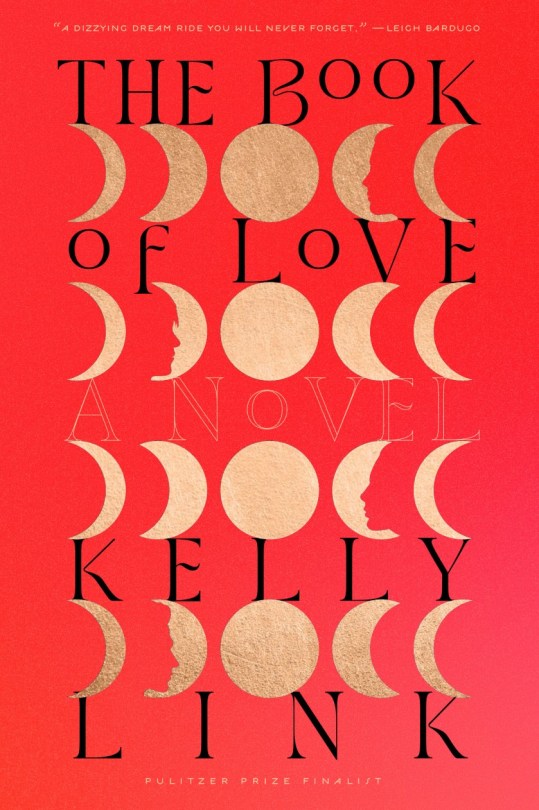
IV. The Book of Love by Kelly Link
If you've read Link's short stories (which honestly, you must read), you know her signature move: a bone-dry witty delivery, used to spin tales of deceptive whimsy and quirkiness, disarming you with daffiness while she sets the hook and yanks. That's the unmistakeable, inimitable texture of a Kelly Link story: deft literary brushstrokes, painting a picture so charming and silly that you don't even notice when she cuts you without mercy.
Turns out that she can quite handily do this for hundreds of pages, and the effect only gets better when it's given space to unfold.
It's a long and twisting mystery about friendship, love, queerness, rock-and-roll, stardom, parenthood, loyalty, lust and duty.
https://pluralistic.net/2024/02/13/the-kissing-song/#wrack-and-roll

V. Lyorn by Steven Brust
The seventeenth book in Steven Brust's long-running Vlad Taltos series. For complicated reasons, Vlad has to hide out in a theater. Why a theater? They are shielded from sorcery, as proof against magical spying by rival theater companies, and Vlad is on the run from the Left Hand of the Jhereg – the crime syndicate's all-woman sorceress squad – and so he has to hide in the theater.
The theater is mounting a production of a famous play that's about another famous play. The first famous play (the one the play is about – try and follow along, would you?) is about a famous massacre that took place thousands of years before. The play was mounted as a means of drumming up support for the whistleblower who reported on the massacre and was invited to a short-term berth in the Emperor's death row as a consequence.
The plot is a fantastic, fast-handed caper story that has a million moving parts, a beautiful prestige, and a coup de grace that'll have you cheering and punching the air.
https://pluralistic.net/2024/04/09/so-meta/#delightful-doggerel

VI. Till Human Voices Wake Us by Rebecca Roque
A teen murder mystery told in the most technorealist way. Cia's best friend Alice has been trying to find her missing boyfriend for months, and in her investigation, she's discovered their small town's dark secret – a string of disappearances, deaths and fires that are the hidden backdrop to the town's out-of-control addiction problem.
Alice has something to tell Cia, something about the fire that orphaned her and cost her one leg when she was only five years old, but Cia refuses to hear it. Instead, they have a blazing fight, and part ways. It's the last time Cia and Alice ever see each other: that night, Alice kills herself.
Or does she? Cia is convinced that Alice has been murdered, and that her murder is connected to the drug- and death-epidemic that's ravaging their town. As Cia and her friends seek to discover the town's secret – and the identity of Alice's killer – we're dragged into an intense, gripping murder mystery/conspiracy story that is full of surprises and reversals, each more fiendishly clever than the last.
https://pluralistic.net/2024/04/16/dead-air/#technorealism

VII. The Steerswoman by Rosemary Kirstein
Randall "XKCD" Munroe pitched me on this over dinner: "All these different people kept recommending them to me, and they kept telling me that I would love them, but they wouldn't tell me what they were about because there's this huge riddle in them that's super fun to figure out for yourself. "The books were published in the eighties by Del Rey, and the cover of the first one had a huge spoiler on it. But the author got the rights back and she's self-published it."
How could I resist a pitch like that? So I ordered a copy. Holy moly is this a good novel! And yeah, there's a super interesting puzzle in it that I won't even hint at, except to say that even the book's genre is a riddle that you'll have enormous great fun solving.
https://pluralistic.net/2024/05/04/the-wulf/#underground-fave

VIII. Moonbound by Robin Sloan
Moonbound's protagonist is a "chronicler," a symbiotic fungus engineered to nestle in a human's nervous system, where it serves as a kind of recording angel, storing up the memories, experiences and personalities of its host. When we meet the chronicler, it has just made a successful leap from its old host – a 10,000-years-dead warrior who had been preserved in an anaerobic crashpod ever since her ship was shot out of the sky – into the body of Ariel, a 12-year-old boy who had just invaded the long-lost tomb.
This is doing fiction in hard mode, and Sloan nails it. The unraveling strangeness of Ariel's world is counterpointed with the amazing tale of the world the chronicler hails from, even as the chonicler consults with the preserved personalities of the heroes and warriors it had previous resided in and recorded.
https://pluralistic.net/2024/06/11/penumbraverse/#middle-anth

IX. Fight Me by Austin Grossman
Aging ex-teen superheroes weigh the legacy of Generation X, in a work that enrobes its savage critique with sweet melancholia, all under a coating of delicious snark. The Newcomers – an amped-up ninja warrior, a supergenius whose future self keeps sending him encouragement and technical schematics backwards through time, and an exiled magical princess turned preppie supermodel – have spent more than a decade scattered to the winds. While some have fared better than others, none of them have lived up to their potential or realized the dreams that seemed so inevitable when they were world famous supers with an entourage of fellow powered teens who worshipped them as the planet's greatest heroes.
As they set out to solve the mystery of the wizard who gave the protagonist his powers, they are reunited and must take stock of who they are and how they got there (cue Talking Heads' "Once In a Lifetime").
The publisher's strapline for this book is "The Avengers Meets the Breakfast Club," which is clever, but extremely wrong. The real comp for this book isn't "The Breakfast Club," it's "The Big Chill."
https://pluralistic.net/2024/07/01/the-big-genx-chill/#im-super-thanks-for-asking

X. Glass Houses by Madeline Ashby
Kristen is the "Chief Emotional Manager" for Wuv, a hot startup that has defined the new field of "affective computing," which is when a computer tells you what everyone else around you is really feeling, based on the irrepressible tells emitted by their bodies, voices and gadgets.
Managing Sumter through Wuv's tumultuous launch is hard work for Kristen, but at last, it's paid off. The company has been acquired, making Kristen – and all her coworkers on the founding core team – into instant millionaires. They're flying to a lavish celebration in an autonomous plane that Sumter chartered when the action begins: the plane has a malfunction and crashes into a desert island, killing all but ten of the Wuvvies.
As the survivors explore the island, they discover only one sign of human habitation: a huge, brutalist, featureless black glass house, which initially rebuffs all their efforts to enter it. But once they gain entry, they discover that the house is even harder to leave.
https://pluralistic.net/2024/08/13/influencers/#affective-computing
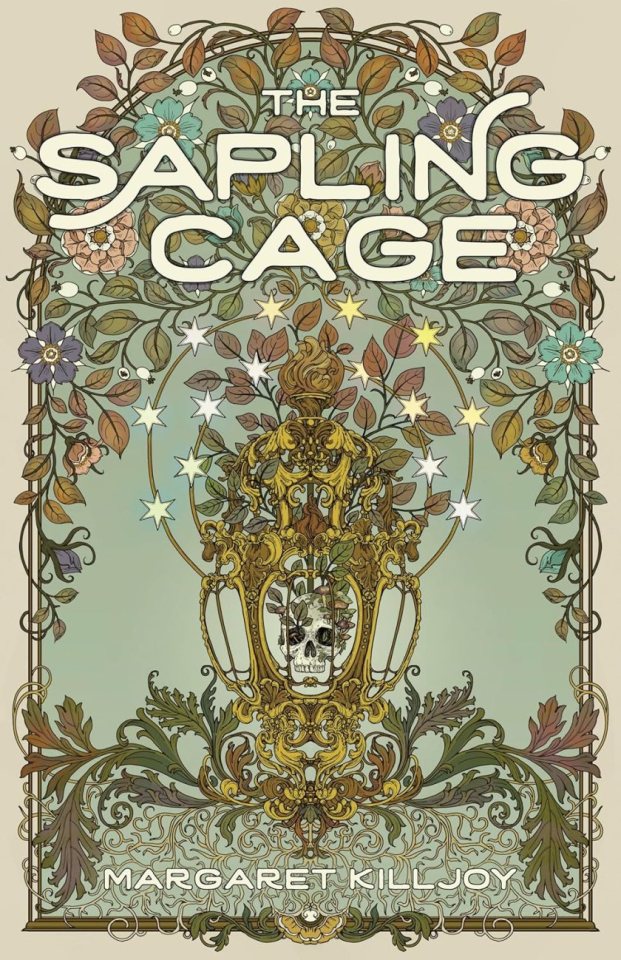
XI. The Sapling Cage by Margaret Killjoy
A queer coming-of-age tale in the mode of epic fantasy. Lorel wants to be a witch, but that's the very last of the adventurous trades to be strictly gender-segregated. Boys and girls alike run away to be knights, brigands and sailors, but only girls can become a witch. Indeed, Lorel's best friend, Lane, is promised to the witches, having been born to a witch herself.
Lorel has signed up for witching just as the land is turning against witches, thanks to a political plot by a scheming duchess who has scapegoated the witches as part of a plan to annex all the surrounding duchies, re-establishing the long-disintegrated kingdom with herself on the throne. To make things worse (for the witches, if not the duchess), there's a plague of monsters on the land, and the forests are blighted with a magical curse that turns trees to unmelting ice. This all softens up the peasantfolk for anti-witch pogroms.
So Lorel has to learn witching, even as her coven is fighting both monsters and the duchess's knights and the vigilante yokels who've been stirred up with anti-witch xenophobia.
https://pluralistic.net/2024/09/24/daughters-of-the-empty-throne/#witchy

XII. Blackheart Man by Nalo Hopkinson
A story that will make you drunk on language, on worldbuilding, and on its roaring, relentless plot. The action is set on Chynchin, a fantastic Caribbean island (or maybe Caribbeanesque – it's never clear whether this is some magical, imaginary world, or some distant future of our own). Chynchin is a multiracial, creole land with a richly realized gift economy that Hopkinson deftly rounds out with a cuisine, languages, and familial arrangements.
Chynchin was founded through a slave rebellion, in which the press-ganged soldiers of the iron-fisted Ymisen empire were defeated by three witches who caused them to be engulfed in tar that they magicked into a liquid state just long enough to entomb them, then magicked back into solidity. For generations, the Ymisen have tolerated Chynchin's self-rule, but as the story opens, a Ymisen armada sails into Chynchin's port and a "trade envoy" announces that it's time for the Chynchin to "voluntarily" re-establish trade with the Ymisen.
The story that unfolds is a staple of sf and fantasy: the scrappy resistance mounted against the evil empire, and this familiar backdrop is a sturdy scaffold to support Hopkinson's dizzying, phantasmagoric tale of psychedelic magic, possessed children, military intrigue, musicianship and sexual entanglements.
https://pluralistic.net/2024/08/20/piche/#cynchin

XIII. Julia by Sandra Newman
Julia is the kind of fanfic that I love, in the tradition of both The Wind Done Gone and Rosencrantz and Gildenstern Are Dead, in which a follow-on author takes on the original author's throwaway world-building with deadly seriousness, elucidating the weird implications and buried subtexts of all the stuff and people moving around in the wings and background of the original.
For Newman, the starting point here is Julia, an enigmatic lover who comes to Winston with all kinds of rebellious secrets – tradecraft for planning and executing dirty little assignations and acquiring black market goods. Julia embodies a common contradiction in the depiction of young women (she is some twenty years younger than Winston): on the one hand, she is a "native" of the world, while Winston is a late arrival, carrying around all his "oldthink" baggage that leaves him perennially baffled, terrified and angry; on the other hand, she's a naive "girl," who "doesn't much care for reading," and lacks the intellectual curiosity that propels Winston through the text.
This contradiction is the cleavage line that Newman drives her chisel into, fracturing Orwell's world in useful, fascinating, engrossing ways. Through Julia's eyes, we experience Oceania as a paranoid autocracy, corrupt and twitchy. We witness the obvious corollary of a culture of denunciation and arrest: the ruling Party of such an institution must be riddled with internecine struggle and backstabbing, to the point of paralyzed dysfunction. The Orwellian trick of switching from being at war with Eastasia to Eurasia and back again is actually driven by real military setbacks – not just faked battles designed to stir up patriotic fervor. The Party doesn't merely claim to be under assault from internal and external enemies – it actually is.
https://pluralistic.net/2024/09/28/novel-writing-machines/#fanfic

XIV. The Wilding by Ian McDonald
McDonald's first horror novel, and it's fucking terrifying. It's set in a rural Irish peat bog that has been acquired by a conservation authority that is rewilding it after a century of industrial peat mining that stripped it back nearly to the bedrock. This rewilding process has been greatly accelerated by the covid lockdowns, which reduced the human footprint in the conservation area to nearly zero.
Lisa's last duty before she leaves the bog and goes home to Dublin is leading a school group on a wild campout in one of the bog's deep clearings. It's a routine assignment, and while it's not her favorite duty, it's also not a serious hardship.
But as the group hikes out to the campsite, one of her fellow guides is killed, without warning, by a mysterious beast that moves so quickly they can barely make out its monstrous form. Thus begins a tense, mysterious, spooky as hell story of survival in a haunted woods, written in the kind of poesy that has defined McDonald's career, and which – when deployed in service of terror – has the power to raise literal goosebumps.
https://pluralistic.net/2024/10/25/bogman/#erin-go-aaaaaaargh

XV. Polostan by Neal Stephenson
Not a spy novel, but a science fiction novel about spies in an historical setting. This isn't to say that Stephenson tramples on, or ignores spy tropes: this is absolutely a first-rate spy novel. Nor does Stephenson skimp on the lush, gorgeously realized and painstakingly researched detail you'd want from an historical novel.
Polostan raises the curtain on the story of Dawn Rae Bjornberg, AKA Aurora Maximovna Artemyeva, whose upbringing is split between the American West in the early 20th century and the Leningrad of revolutionary Russia (her parents are an American anarchist and a Ukrainian Communist who meet when her father travels to America as a Communist agitator). Aurora's parents' marriage does not survive their sojourn to the USSR, and eventually Aurora and her father end up back in the States, after her father is tasked with radicalizing the veterans of the Bonus Army that occupied DC, demanding the military benefits they'd been promised.
All of this culminates in her return sojourn to the Soviet Union, where she first falls under suspicion of being an American spy, and then her recruitment as a Soviet spy.
Also: she plays a lot of polo. Like, on a horse.
https://pluralistic.net/2024/11/04/bomb-light/#nukular
NONFICTION
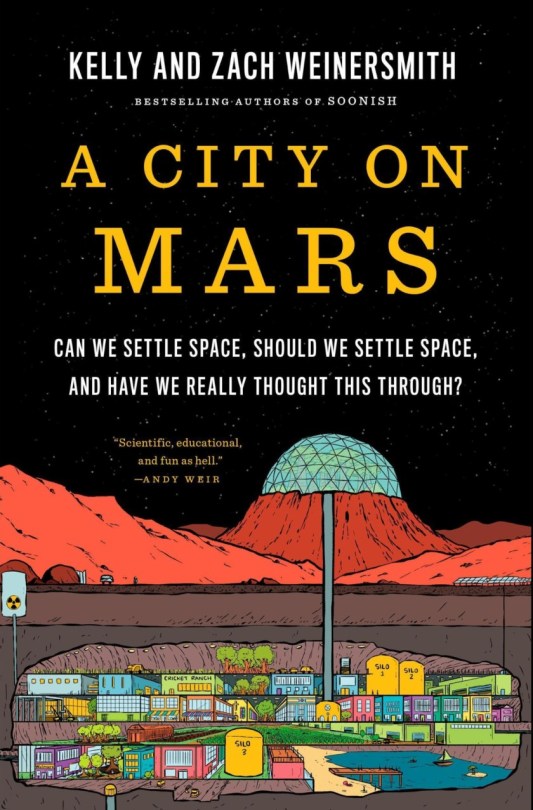
I. A City on Mars by Kelly and Zach Weinersmith
Biologist Kelly Weinersmith and cartoonist Zach Weinersmith set out to investigate the governance challenges of the impending space settlements they were told were just over the horizon. Instead, they discovered that humans aren't going to be settling space for a very long time, and so they wrote a book about that instead.
The Weinersmiths make the (convincing) case that every aspect of space settlement is vastly beyond our current or reasonably foreseeable technical capability. What's more, every argument in favor of pursuing space settlement is errant nonsense. And finally: all the energy we are putting into space settlement actually holds back real space science, which offers numerous benefits to our species and planet (and is just darned cool).
https://pluralistic.net/2024/01/09/astrobezzle/#send-robots-instead
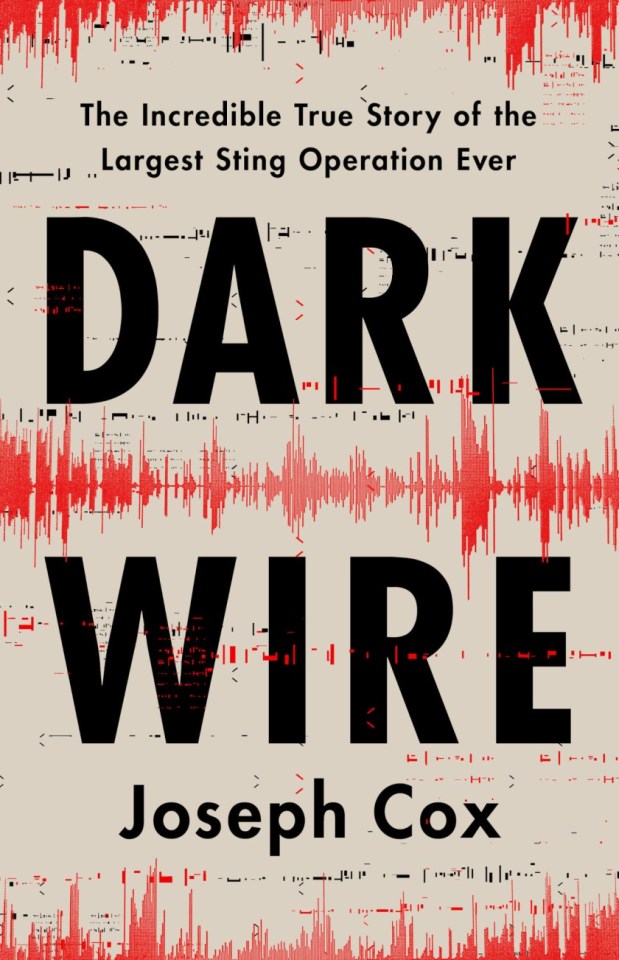
II. Dark Wire by Joseph Cox
Cox spent years on the crimephone beat, tracking vendors who sold modded phones (first Blackberries, then Android phones) to criminal syndicates with the promise that they couldn't be wiretapped by law-enforcement.
He tells the story of the FBI's plan to build an incredibly secure, best-of-breed crimephone, one with every feature that a criminal would want to truly insulate themselves from law enforcement while still offering everything a criminal could need to plan and execute crimes.
This is really two incredible tales. The first is the story of the FBI and its partners as they scaled up Anom, their best-of-breed crimephone business. This is a (nearly) classic startup tale, full of all-nighters, heroic battles against the odds, and the terror and exhilaration of "hockey-stick" growth.
The other one is the crime startup, the one that the hapless criminal syndicates that sign up to distribute Anom devices find themselves in the middle of. They, too, are experiencing hockey-stick growth. They, too, have a fantastically lucrative tiger by the tail. And they, too, have a unique set of challenges that make this startup different from any other.
Cox has been on this story for a decade, and it shows. He has impeccable sourcing and encyclopedic access to the court records and other public details that allow him to reproduce many of the most dramatic scenes in the Anom caper verbatim.
https://pluralistic.net/2024/06/04/anom-nom-nom/#the-call-is-coming-from-inside-the-ndrangheta
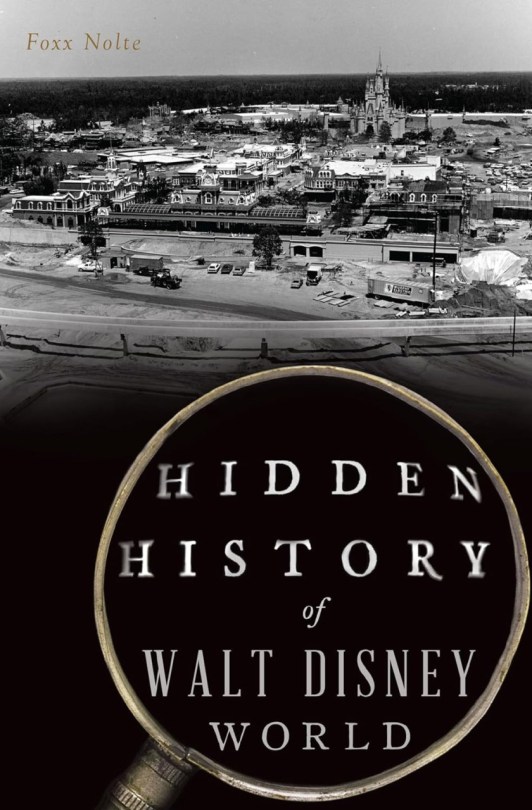
III. The Hidden History of Walt Disney World by Foxx Nolte
No one writes about Disney theme parks like Foxx Nolte; no one rises above the trivia and goes beyond the mere sleuthing of historical facts, no one nails the essence of what makes these parks work – and fail.
The history of Walt Disney World is also a history of the American narrative from the 1960s to the turn of the millennium, especially once Epcot enters the picture and Disney sets out to market itself as a futuristic mirror to America and the world. There's a doomed plan to lead the nation in the provision of an airport for the largely hypothetical short runway aircraft that never materialized, the Disney company's love-hate affair with Florida's orange growers, and the geopolitics of installing a permanent World's Fair, just as World's Fairs were disappearing from the world stage.
In focusing on the conflicts between different corporate managers, outside suppliers, and the gloriously flamboyant weirdos of Florida, Nolte's history of Disney World transcends amusing anaecdotes and tittle-tattle – rather, it illustrates how the creative sparks thrown off by people smashing into each other sometimes created towering blazes of glory that burn to this day.
https://pluralistic.net/2024/07/15/disnefried/#dialectics

IV. Network Nation by Richard R John
An extremely important, brilliantly researched, deep history of America's love/hate affair with not just the telephone, but also the telegraph. It is unmistakably as history book, one that aims at a definitive takedown of various neat stories about the history of American telecommunications.
The monopolies that emerged in the telegraph and then the telephone weren't down to grand forces that made them inevitable, but rather, to the errors made by regulators and the successful gambits of the telecoms barons. At many junctures, things could have gone another way.
Most striking about this book were the parallels to contemporary fights over Big Tech trustbusting, in our new Gilded Age. Many of the apologies offered for Western Union or AT&T's monopoly could have been uttered by the Renfields who carry water for Facebook, Apple and Google. John's book is a powerful and engrossing reminder that variations on these fights have occurred in the not-so-distant past, and that there's much we can learn from them.
https://pluralistic.net/2024/07/18/the-bell-system/#were-the-phone-company-we-dont-have-to-care
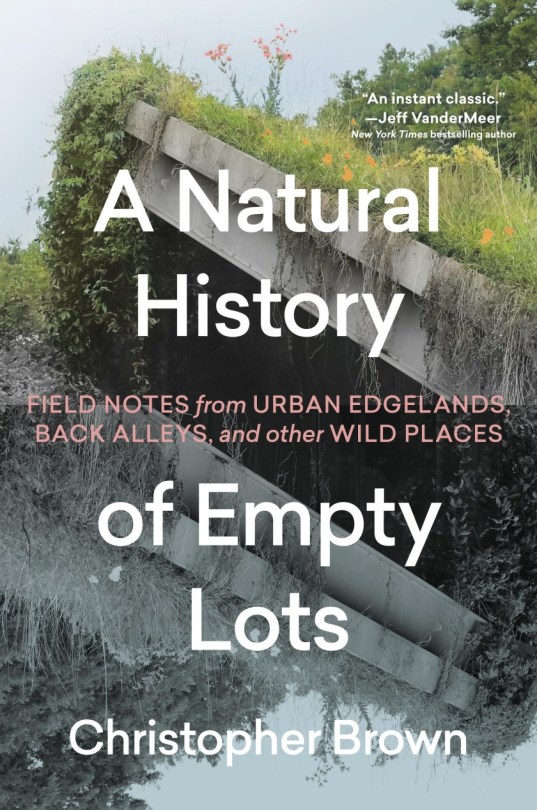
V. A Natural History of Empty Lots by Christopher Brown
A frustratingly hard to summarize book, because it requires a lot of backstory and explanation, and one of the things that makes this book so! fucking! great! is how skillfully Brown weaves disparate elements – the unique house he built in Austin, the wildlife he encounters in the city's sacrifice zones, the politics that created them – into his telling.
This series of loosely connected essays that explains how everything fits together: colonial conquest, Brown's failed marriage, his experience as a lawyer learning property law, what he learned by mobilizing that learning to help his neighbors defend the pockets of wildness that refuse to budge.
It's filled with pastoral writing that summons Kim Stanley Robinson by way of Thoreau, and it sometimes frames its philosophical points the way a cyberpunk writer would.
The kind of book that challenges how you feel about the crossroads we're at, the place you live, and the place you want to be.
https://pluralistic.net/2024/09/17/cyberpunk-pastoralism/#time-to-mow-the-roof
GRAPHIC NOVELS
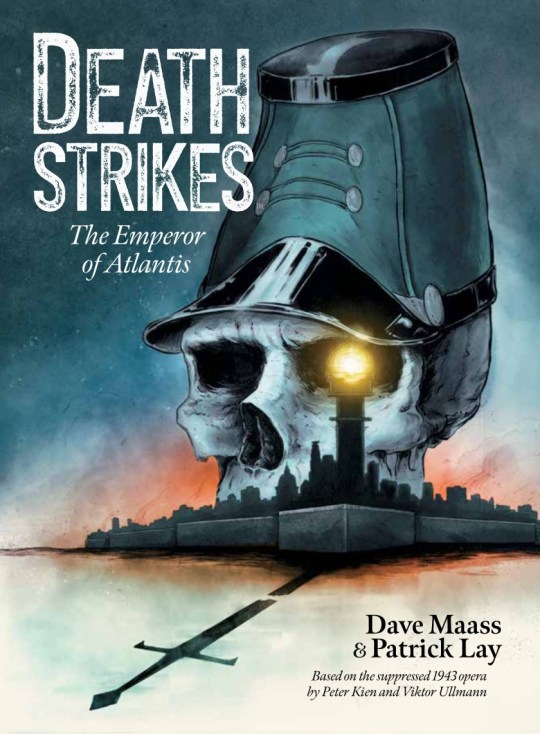
I. Death Strikes by David Maass and Patrick Lay
"The Emperor of Atlantis," is an opera written by two Nazi concentration camp inmates, the librettist Peter Kien and the composer Viktor Ullmann, while they were interned in Terezin, a show-camp in Czechoslovakia that housed numerous Jewish artists, who were encouraged to make and display their work as a sham to prove to the rest of the world that Nazi camps were humane places.
Death Strikes was adapted by my EFF colleague Dave Maass, an investigator and muckraker and brilliant writer, who teamed up with illustrator Patrick Lay and character designer Ezra Rose (who worked from Kien and Ullmann's original designs, which survived along with the score and libretto).
The Emperor's endless wars have already tried Death's patience. Death brings mercy, not vengeance, and the endless killing has dismayed him. The Emperor's co-option drives him past the brink, and Death declares a strike, breaking his sword and announcing that henceforth, no one will die.
Needless to say, this puts a crimp in the Emperor's all-out war plan. People get shot and stabbed and drowned and poisoned, but they don't die. They just hang around, embarrassingly alive (there's a great comic subplot of the inability of the Emperor's executioners to kill a captured assassin).
While this is clearly an adaptation, Kien and Ullmann's spirit of creativity, courage, and bittersweet creative ferment shines through. It's a beautiful book, snatched from death itself.
https://pluralistic.net/2024/01/23/peter-kien-viktor-ullmann/#terez

II. My Favorite Things Is Monsters Book Two by Emil Ferris
The long, long delayed sequel to the tale of Karen Reyes, a 10 year old, monster-obsessed queer girl in 1968 Chicago who lives with her working-class single mother and her older brother, Deeze, in an apartment house full of mysterious, haunted adults. There's the landlord – a gangster and his girlfriend – the one-eyed ventriloquist, and the beautiful Holocaust survivor and her jazz-drummer husband.
Ferris's storytelling style is dazzling, and it's matched and exceeded by her illustration style, which is grounded in the classic horror comics of the 1950s and 1960s. Characters in Karen's life – including Karen herself – are sometimes depicted in the EC horror style, and that same sinister darkness crowds around the edges of her depictions of real-world Chicago.
Book Two picks up from Book One's cliffhanger and then rockets forward. Everything brilliant about One is even better in Two – the illustrations more lush, the fine art analysis more pointed and brilliant, the storytelling more assured and propulsive, the shocks and violence more outrageous, the characters more lovable, complex and grotesque.
Everything about Two is more. The background radiation of the Vietnam War in One takes center stage with Deeze's machinations to beat the draft, and Deeze and Karen being ensnared in the Chicago Police Riots of '68. The allegories, analysis and reproductions of classical art get more pointed, grotesque and lavish. Annika's Nazi concentration camp horrors are more explicit and more explicitly connected to Karen's life. The queerness of the story takes center stage, both through Karen's first love and the introduction of a queer nightclub. The characters are more vivid, as is the racial injustice and the corruption of the adult world.
https://pluralistic.net/2024/06/01/the-druid/#

III. So Long Sad Love by Mirion Malle
Cleo is a French comics creator who's moved to Montreal, in part to be with Charles, a Quebecois creator who helps her find a place in the city's tight-knit artistic scene. The relationship feels like a good one, with the normal ups and downs, but then Cleo travels to a festival, where she meets Farah, a vivacious and talented fellow artist. They're getting along great…until Farah discovers who Cleo's boyfriend is. Though Farah doesn't say anything, she is visibly flustered and makes her excuses before hurriedly departing.
This kicks off Cleo's hunt for the truth about her boyfriend, a hunt that is complicated by the fact that she's so far from home, that her friends are largely his friends, that he flies off the handle every time she raises the matter, and by her love for him.
Malle handles this all so deftly, showing how Cleo and her friends all play archetypal roles in the recurrent missing stair dynamic. It's a beautifully told story, full of charm and character, but it's also a kind of forensic re-enactment of a disaster, told from an intermediate distance that's close enough to the action that we can see the looming crisis, but also understand why the people in its midst are steering straight into it.
Packed with subtlety and depth, romance and heartbreak, subtext that carries through the dialog (in marvelous translation from the original French by Aleshia Jensen) and the body language in Malle's striking artwork.
https://pluralistic.net/2024/06/25/missing-step/#the-fog-of-love

IV. Bea Wolf by Zach Wienersmith and Boulet
A ferociously amazingly great illustrated kids' graphic novel adaptation of the Old English epic poem, which inspired Tolkien, who helped bring it to popularity after it had languished in obscurity for centuries.
Weinersmith and Boulet set themselves the task of bringing a Germanic heroic saga from more than a thousand years ago to modern children, while preserving the meter and the linguistic and literary tropes of the original. And they did it!
There are some changes, of course. Grendel – the boss monster that both Beowulf and Bea Wulf must defeat – is no longer obsessed with decapitating his foes and stealing their heads. In Bea Wulf, Grendel is a monstrously grown up and boring adult who watches cable news and flosses twice per day, and when he defeats the kids whose destruction he is bent upon, he does so by turning them into boring adults, too.
The utter brilliance of Bea Wulf is as much due to the things it preserves from the original epic as it is to the updates and changes. Weinersmith has kept the Old English tradition of alliteration, right from the earliest passages, with celebrations of heroes like "Tanya, treat-taker, terror of Halloween, her costume-cache vast, sieging kin and neighbor, draining full candy-bins, fearing not the fate of her teeth. Ten thousand treats she took. That was a fine Tuesday."
https://pluralistic.net/2024/06/24/awesome-alliteration/#hellion-hallelujah
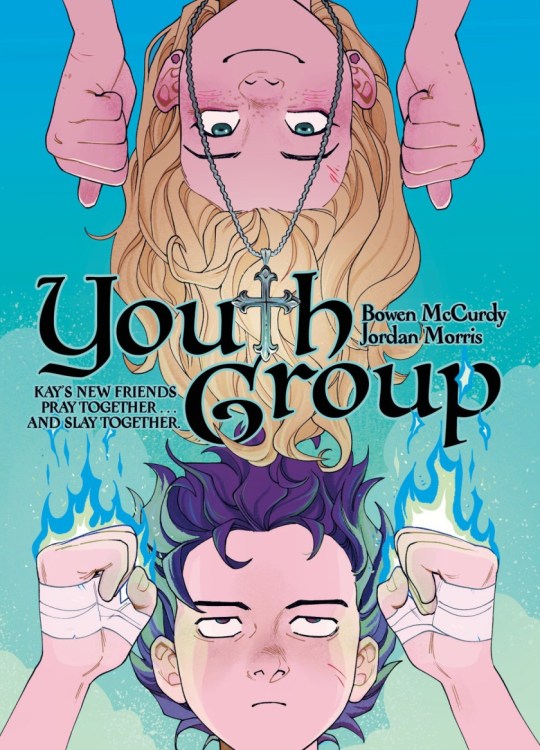
V. Youth Group by Bowen McCurdy and Jordan Morris
A charming tale of 1990s ennui, cringe Sunday School – and demon hunting.
Kay is a bitter, cynical teenager who's doing her best to help her mother cope with an ugly divorce that has seen her dad check out on his former family. Mom is going back to church, and she talks Kay into coming along with her to attend the church youth group.
But this is no ordinary youth group. Kay's ultra-boring suburban hometown is actually infested with demons who routinely possess the townspeople, and that baseline of demonic activity has suddenly gone critical, with a new wave of possessions. Suddenly, the possessed are everywhere – even Kay's shitty dad ends up with a demon inside of him.
That's when Kay discovers that the youth group and its corny pastor are also demon hunters par excellence. Their rec-rooms sport secret cubbies filled with holy weapons, and the words of exorcism come as readily to them as any embarrassing rewritten devotional pop song. Kay's discovery of this secret world convinces her that the youth group isn't so bad after all, and soon she is initiated into its mysteries, including the existence of rival demon-hunting kids from the local synagogue, Catholic church, and Wiccan coven.
https://pluralistic.net/2024/07/16/satanic-panic/#the-dream-of-the-nineties

VI. Justice Warriors: Vote Harder by Matt Bors and Ben Clarkson
Vote Harder sees Bubble City facing its first election in living memory, as the mayor – who inherited his position from his "powerful, strapping Papa" – loses a confidence vote by the city's trustees. They're upset with his plan to bankrupt the city in order to buy a laser powerful enough to carve his likeness into the sun as a viral stunt for the launch of his comeback album. The trustees are in no way mollified by the fact that he expects to make a lot of money selling special branded sunglasses that allow Bubble City (and the mutant hordes of the Uninhabited Zone) to safely look into the sun and see what their tax dollars bought.
So it's time for an election, and the two candidates are going hard: there's the incumbent Mayor Prince; there's his half-sister and ex-girlfriend, Stufina Vipix XII, and there's a dark-horse candidate Flauf Tanko, a mutant-tank cyborg that went rogue after a militant Home Owners Association disabled it and its owners abandoned it. Flauf-Tanko is determined to give the masses of the Uninhabited Zone the representation they've been denied for so long, despite the structural impediments to this (UZers need to complete a questionnaire, sub-forms, have three forms of ID, and present a rental contract, drivers license, work permit and breeding license. They also need to get their paperwork signed in person at a VERI-VOTE location, then wait 14 days to get their voter IDs by mail. Also, districts of 2 million or more mutants are allocated the equivalent of only 250,000 votes, but only if 51% of eligible voters show up to the polls; otherwise, their votes are parceled out to other candidates per the terms of the Undervoting and Apathy Allotment Act).
What unfolds is a funny, bitter, superb piece of political satire that could not be better timed.
https://pluralistic.net/2024/09/11/uninhabited-zone/#eremption-season
As I mentioned in the introduction to this roundup, I had three books out in 2024; a new hardcover, and the paperback editions of two books that came out in hardcover last year. There's more on the horizon – a new hardcover novel (PICKS AND SHOVELS) in Feb 2025, along with the paperback of my novel THE BEZZLE (also Feb 2025). I just turned in the manuscript for my next nonfiction book, ENSHITTIFICATION, which will also be adapted as a graphic novel. I'll also be shortly announcing the publication details for a YA graphic novel, a new essay collection and short story collection.
If you enjoy my work – the newsletter, the talks, the reviews – the best way to support me is to buy my books. I write for grownups, teens, middle-schoolers and little kids, so there's something for everyone!

I. The Lost Cause A solarpunk novel of hope in the climate emergency. "The first great YIMBY novel" -Bill McKibben. "Completely delightful…Neither utopian nor dystopian…I loved it" -Rebecca Solnit. A national bestseller!
https://us.macmillan.com/books/9781250865946/thelostcause/
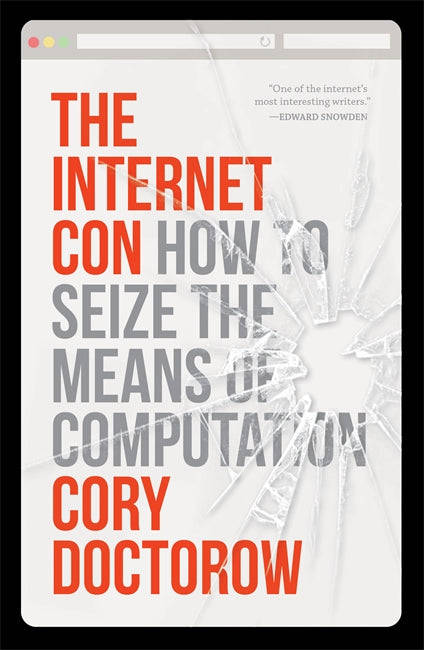
II. The Internet Con: How to Seize the Means of Computation A detailed disassembly manual for people who want to dismantle Big Tech. "A passionate case for 'relief from manipulation, high-handed moderation, surveillance, price-gouging, disgusting or misleading algorithmic suggestions. -Akash Kapur, New Yorker. Another national bestseller!
https://www.versobooks.com/products/3035-the-internet-con
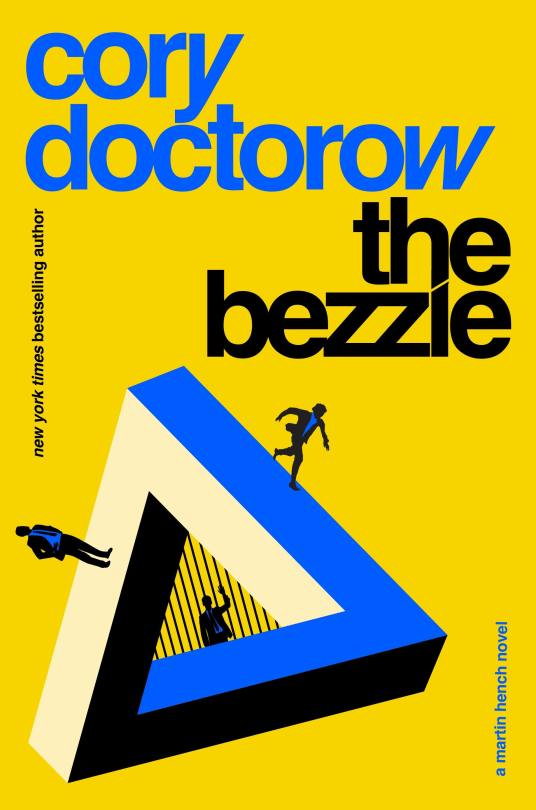
III. The Bezzle. A seething rebuke of the privatized prison system that delves deeply into the arcane and baroque financial chicanery involved in the 2008 financial crash. "Righteously satisfying…A fascinating tale of financial skullduggery, long cons, and the delivery of ice-cold revenge." –Booklist. A third national bestseller!
https://us.macmillan.com/books/9781250865878/thebezzle/
87 notes
·
View notes
Text
Discussion: A Memory Called Empire (Arkady Martine)
I just finished A Memory Called Empire. I'm not going to do that whole thing where you start a long review and at the end it turns out it's 90% a summary of the whole thing. If you want to know what it's about, go to Storygraph or buy it at your preferred bookseller.
I really liked this book. It's quite slow-paced, but in my opinion not in a way that means it needs a thorough edit. The setting was interesting. I enjoyed the references to Mesoamerican culture - I rarely see that kind of thing handled well in SFF. Too often non-western cultural inspiration is shoved in your face to prove itself, and at that point only showing the clearer that the author is not a native of that culture. The characters were great and I love me a weird, but consistent naming tradition. I kinda need a cat named Two Mittens now.
If that wasn't enough praise from this fairly critical reader, the novel also deals with really interesting themes, which came at a very relevant moment in my life. The theme of Empire / colonialism is an obvious one which I'm not going to discuss further - I have Thoughts (TM), but I'm not knowledgeable enough on the topic to do it justice. Having said that, I personally found it interesting to make the comparison of the overwhelming presence of Teixcalaanli culture and the ubiquity of American (pop)culture, whether the author intended that or not.
The other obvious one is that of identity, and the things which shape it. I liked the literal and literary device of the imago-machine and how much it informs parts of one's identity, personality and definitely one's competence and skill-level. I think it's also one of the first times I've truly wished that sci-fi tech existed in real life. As someone who has made the switch from a university level education to a career in the trades, I'd fucking love an imago-machine. I am continually frustrated between needing more input at work and having too much to truly grasp the secrets of trade and physics.
It also made me wonder about how much I changed since I left uni. I am assuming that fairly large parts of how I am and appear in working life are directly inspired by my masters (which is a shit term in English, but 'teacher' doesn't really cover it either - in my own language the word I mean is a mashup of the two and that covers it best for me). As a person moving on from advanced-beginner-feminist to intermediate-feminist, simply by way of, you know, aging, it also makes me think a lot about good and toxic forms of masculinity, and now that I am typing this down, it also makes me realize that I don't spend nearly as much time thinking about femininity. Must correct that at some point, despite how sore of a topic it has been for me in the past. Growing up forced into a pick-me-girl-role will do that to you.
Anyway, shoutout to J. and P., alpha-men in the non-manosphere meaning of the word, for giving me enough respect to ask me to verify shit spouted by colleagues. Also a shoutout to F., A., M. and A., for being kind and decent men who are happy to teach a beginning lady in their field everything they know, with some goodly personal advice sprinkled in free of charge. Y'all are the real MVPs.
In a related vein, this theme of identity also makes me think about my own in relation to the level of education I have, the political opinions I hold, and the area I was born and bred in and still live in. I'm consistently oscillating violently between either identifying with the higher educated part of the populace and their progressive stance whilst eschewing the majority of my colleagues because I don't share their political and cultural tastes, or identifying with said colleagues because at least they have an actual skillset, a sense of pragmatism and down-to-earthness that is often absent in my uni peers. I have never quite managed to shape an identity embracing both of those parts of me, and that's a struggle I recognize in this work. Don't think I've ever actually managed to really identify myself with a main character this much, from the above themes to the (admittedly sparse) descriptions of her physical appearance.
1 note
·
View note
Text
GoT/HotD and LotR have breathed new life into sword making. It may be a rare art, but it has avoided becoming a lost art.
A Scots swordsmith has thanked popular TV shows and films for keeping his craft alive after "almost" being the last of his kind. Rob Miller - who has a three-year waiting list for his commissions - has been working in the specialised craft for the last 33 years after he moved to Torrin on the Isle of Skye. The dad-of-one recalled learning his art from scratch in the early 90s through magazines and writing letters to booksellers to find novels to learn how to make intricately crafted swords from steel. With few swordsmiths around at the time, Rob feels he helped prevent the profession from becoming “completely redundant”. However, in recent years he has noticed a boom in demand thanks to films and franchises such as Lord Of The Rings and Game Of Thrones which hark back to the past. Rob has now set up a workshop in his back garden, where he lives with his wife of 15 years Meg, 52, who is also an artist, taking between one week to several months perfecting each of his commissions which are sent “all over the world” and cost anywhere between £700 and £10,000. “Whilst I’m not the last of the living swordsmiths, I almost was for a moment there and I feel I was someone who snatched it back from becoming completely redundant,” Rob said. “There were a few people worldwide but there weren’t that many back when I started.
So business is looking up for swordsmiths – partly an unanticipated consequence of ASoIaF.
#game of thrones#house of the dragon#swords#rob miller#swordsmiths#scotland#gra o tron#trône de fer#kampen om tronen#pemainan takhta#a guerra dos tronos#juego de tronos#trono di spade#taht oyunları#trò chơi của ngai#valtaistuinpeli#hra o trůny#isang kanta ng yelo at apoy#гра престолів#왕좌의 게임#权力的游戏#ゲームの玉座#صراع العروش#تخت کے کھیل#गेम ऑफ़ थ्रोन्स#গেম অব থ্রোনস#ಗೇಮ್ ಆಫ್ ಥ್ರೋನ್ಸ್#เกมล่าบัลลังก์#гульня тронаў#игра престолов
0 notes
Text
i’ve read almost 270 books this year, so i wanted to share my favourites! here are the absolute best books i read in 2022.
animal by lisa taddeo: fun, real, and overall a wild ride. lisa taddeo knows how to describe things we all think, and manages to show us our worst thoughts in beautiful ways.
detransition baby by torrey peters: LOVED this little family. amazing gender politics and explorations. thrilling, sad, funny, all of it.
yolk by mary h. k. choi: a must read for those familiar with sibling rivalries. relatable and heartwrenching.
woman eating by claire kohda: a fresh and smart take on vampirism. it’s rare to find such a cleverly crafted rewrite of creatures that have already been featured for centuries.
beartown series by fredrik backman: not a new author for me but a hard hitting gutpunch either way. so intricate and subtle, so beautiful and real. also the only time i will ever care about hockey.
a certain hunger by chelsea g summers: from the description alone i knew i was gonna love it, so i looked for it for a year, then devoured it in a day. a food critic who eats men in the fanciest ways like a bon appetit hannibal lecter? i have only good things to say.
out by natsuo kirino: the graphic imagery and unsettling atmosphere in this book is INSANE!! it was such an intense read that i could almost feel it in my bones. gorey and violent, yet tender and real.
paul takes the form of a mortal girl by andrea lawlor: i’ve literally been raving about this book since i read it. it touched me very deeply and might be my favourite book of the year. an incredibly funny look at gender expression and sexuality, set in the 90’s club scene. worth a read for every lgbt person who likes fun.
her majesty’s royal coven by juno dawson: wild and thrilling and cozy and heartbreaking, this is a story featuring witches, imperialism, royal fanaticism, gender, grief, and friendship. i want more.
exquisite corpse by poppy z brite: i hadn’t been able to find this book anywhere until my london trip in september and i’m so happy that i did. the inspiration behind this book is obvious and adds several layers to this grotesquely gorgeous novel.
the book eaters by sunyi dean: i’m very picky with my fantasy reads but im so glad i gave this a chance. incredible world building and relationships. plus the overall concept of book eating is genius.
the left handed booksellers of london by garth nix: i can’t even explain what it was about this book i loved so much but GOD did i like it !!!! terry pratchett-esque, yet unique and beautiful. i loved every character and wanted more.
thistlefoot by gennarose nethercott: this beautiful and creative baba yaga retelling kept me company during a long train ride and stuck with me. such vivid imagery and an overall great book.
hell followed with us by andrew joseph white: i wanted to scream during this entire book, honestly. this biblical horror feels like the worlds best fever dream and i loved it SO MUCH!!!! gender and prejudice is explored in a new and beautiful way, while spotted with gore. on a personal note, this book featured one of the only autistic characters i’ve encountered in literature that i, as an autistic person, related to and found compelling.
horrorstor by grady hendrix: y’all know i’ll read anything by this author but this was just so fucking fun. i read it in one night and really felt as though i myself was trapped in a haunted knockoff ikea.
boy parts by eliza clark: very much up my alley in terms of genre. amazing writing and such a good story.
almond by sohn won-pyung: this was surprisingly relatable and ironically emotional. simply stunning. must read.
the seep by chana porter: i went into this blind and i’m so glad i did, because trying to explain why you should read this book is pointless. it’s simply, indescribably great.
42 notes
·
View notes
Link
I’ve sold mostly books on Amazon for about 12 years, excellent customer service and compliance to the extent a person can remain compliant with the constantly moving targets. You don’t keep bucking the AZ bronco for 12 years without being thrown minus doing things right. In total I’ve carried about 15,000 titles, currently over 5,000 in inventory. Lots of interesting and often rare stuff, all genres, many academic titles.
The account despite excellent metrics is now showing as At Risk with 3 Restricted Policy Violations because Amazon has without warning banned 3 titles for content. The first was a college classroom-intended paperback Mein Kampf with a foreword by a history professor about the content. This was not a leather bound coffee table Baby’s First Mein Kampf with a gilded swastika for the deranged parent. I posted about this banning on my social media and one of my friends who happens to be Jewish noted that he was assigned passages of Mein Kampf in Hebrew school, which makes perfect sense to me.
Just now I’ve received an email that two books were banned the same day, two more strikes on my account. For over a year I’ve had a rarish early printing of The Turner Diaries for sale, a work of fiction (!) about a right wing militia insurgency in the US. I haven’t read it - believe it or not I don’t read every book I sell, impossible on top of undesirable - but I’ve known about it since the 90s, & the content seems similar to Edward Abbey’s The Monkey Wrench Gang (not yet banned, give it time) with adjustments for philosophy and targets. Banned at the same time was For My Legionnaires, the 1936 “Romanian Mein Kampf” which spurred on the Iron Guard in that country and is an important historical text for anyone studying Romanian history. Ironically the book was initially banned in Romania when first published, seeing as the government had a censorship board.
It’s not that I specialize in rightist texts - far from it, I’m an old school liberal which to me means no censorship - I just happen to have 5,000+ titles for sale and we’re opening things up to the public to ban titles now, so that’s going to affect every bookseller with an awful chilling effect. As far as Amazon is concerned now however I’m a fascist crank and a danger to the community.
Right now would be a good time to start amassing a collection of “forbidden” books and you can easily do it for free. How? Digital copies are fine, so as long as you have local backup copies. Don’t trust the cloud. And if you can, have an external hard drive, since your computer’s drive could go at any minute.
The Internet Archive, The Eye EU and LG are all great places to find free ebooks, including books mentioned above and many others. It doesn’t matter if you find the content in question repulsive, it’s important that historic books are preserved for future generations. Download and learn to use wget for The Eye.
49 notes
·
View notes
Text
Jim Lee’s X-Men Artist’s Edition now available from IDW.
Jim Lee’s X-Men Artist’s Edition Meticulously Reproduces the Original Artwork that Defined an Era of Marvel’s Mutant Super Heroes. The Centerpiece of this Highly-Anticipated Artist’s Edition is X-Men #1, the Best-Selling Comic Book of All Time, Presented in Its Entirety!

IDW’s multiple Eisner Award-winning Artist’s Edition line expands with perhaps its most eagerly awaited new volume: Jim Lee’s X-Men Artist’s Edition, now available in stores.
Nearly 30 years ago, Jim Lee joined writer Chris Claremont and inker Scott Williams to launch an all-new, all-different X-Men – the classic 1990s “Blue Team” that defined the look and attitude of the X-Men brand for a generation. The impact his dynamic artwork has had on the comics industry – to his legions of fans and the artists who have been inspired by and emulated him – is truly immeasurable. In a career filled with highlights, his work on X-Men is arguably his most popular and enduring.

The Artist’s Edition format reproduces Jim Lee’s original artwork at original size, meticulously scanned to preserve every minute detail and subtle nuance of the superstar illustrator’s skill. Readers are afforded an insight into his creative process that has never before been available outside of original art collectors.
“This artwork represents a very distinct and hyper-exciting period of my career, when everything was evolving and growing really rapidly,” says Lee. “The collected art looks just like the originals, and it’s great to experience it in a handy oversized book. It brings back incredibly fond memories of creating this work, and my love for the characters. I’m happy that the fans love it so much!”

“Jim Lee’s X-Men comics defined an era,” says Williams. “I got a front row view of the perfect pairing of artist and character that exploded off the pages, becoming an iconic template for a generation of comic fans. Beautifully reproduced and presented, Jim Lee’s X-Men Artist’s Edition is a nostalgic look back at the fun of what ‘90s comics could be. So grateful to have been a part of it all!” Jim Lee’s X-Men Artist’s Edition includes all 37 pages -- the complete story -- from the bestselling comic book of all time, October 1991’s X-Men #1. The book also includes over 100 additional examples of Lee’s gorgeous original artwork from iconic issues, including covers, splashes, pin-ups, interior pages, and trading cards, as well as a double foldout of all four X-Men #1 connecting covers!. Jim Lee’s X-Men Artist’s Edition by Jim Lee, Chris Claremont, and Scott Williams ISBN 978-1-68405-809-9 $150.00 US / $195.00 CAN 160-page, black-and-white hardcover, 12” x 17"
In addition to the spectacular regular edition offered through comic shops and booksellers, IDW is proud to offer a rare Jim Lee’s X-Men Artist’s Edition - Signed & Numbered Variant, exclusively available at the IDW web store while supplies last. Featuring an alternate cover (the original artwork to X-Men #5 from February 1992), this edition comes with a bound-in signature plate limited to 175 units, autographed by Jim Lee and Scott Williams. Jim Lee’s X-Men Artist’s Edition - Signed & Numbered Variant by Jim Lee, Chris Claremont, and Scott Williams ISBN 978-1-68405-810-5 $300.00 US 160-page, black-and-white hardcover, 12” x 17" Limited to 175, Signed by Jim Lee & Scott Williams For information on how to acquire copies of IDW’s Artist’s Editions, please contact your local comic shop.

#comic news#publishing news#idw#jim lee#marvel comics#x-men#chris claremont#jim lee’s x-men artist’s edition#variant
1 note
·
View note
Text
'Nosferatu,' La Doña turns 1, CBD sampling: 45 free things to do this weekend - City Pages


"Volta Photo" at the Weinstein Hammons Gallery Sanle Sory FRIDAY: Volta Photo In 1960, Sanlé Sory opened a photography studio in Bobo-Dioulasso, the trendy/artistic city in Burkina Faso. That same year, the nation had received full independence from France. As the country entered a new post-colonial era, Sory photographed the vibrant youth culture that emerged. Spanning 20-some years, his collection of portraits features lovers kissing, smiling friends with a boombox, and style so fly it could belong in a high-fashion magazine from any era. The artist, who still lives and works in the area, began touring exhibitions of his work in the late ’90s. This show at the Weinstein Hammons Gallery is a rare chance to see these still-youthful images in person. There will be an opening reception from 6 to 8 p.m. on Friday, October 18. Free. Weinstein Hammons Gallery, 908 W. 46th St., Minneapolis; 612-822-1722. –Jessica ArmbrusterAndy Ulseth With Brian Just Band and Picked to Click seventh place winner Prim Woes. 10 p.m. Oct. 18. Free. 331 Club, 331 13th Ave. NE, Minneapolis; 612-331-1746.Lungs (Album Release Show) With Hive, Witchden, and Nothingness. 9 p.m. Oct. 18. Free. Hexagon Bar, 2600 27th Ave. S., Minneapolis; 612-722-3454.The Jason Dixon Line 8:30 p.m. Oct. 18. Free. Schooner Tavern, 2901 27th Ave. S., Minneapolis; 612-729-4365.Versions With happy hour during musical performances. 9-11 p.m. Oct. 18. Free. Apoy, 4301 Nicollet Ave., Minneapolis; 612-824-4719.

"Creativity in Everyday Life" at Goldstein Museum of Design Creativity in Everyday Life Design is everywhere in our daily lives, including the cars we drive, the homes we live in, the utensils we use, and the clothes we wear. In this show, the Goldstein moves from big-picture design (design thinking as a mode of problem solving) to the granular (i.e. specific everyday objects). The exhibition is also participatory, with visitors invited to weigh in with their opinions the most innovation and creative aspects of the show. Opening reception 5:30-7:30 p.m. Fri., Oct. 18, featuring a silent auction to benefit GMD. Daily from Oct. 18-Jan. 5. Free. Goldstein Museum of Design, 1985 Buford Ave., 346 McNeal Hall, St. Paul; 612-624-7801. --Camille LeFevreWildflyer Coffee Launch Party Fundraiser for a new coffee shop, featuring live music from the Immaculate Beings, Lavender Daughter, Mpls Drew, and Audiyo Element. 6 p.m. Oct. 18. Free. 56 Brewing, 3055 NE Columbia Ave., Minneapolis; 612-404-0056.#MeToo in Minnesota History Exhibitions examining issues of sexual assault and violence through the stories of several Minnesota women, past and present. Oct. 15-April 5. Free. Minnesota History Center, 345 W. Kellogg Blvd., St. Paul; 651-259-3000.As, Not For: Dethroning Our Absolutes Group show curated by Jerome Harris. Oct. 18-Nov. 10. Free. MCAD Gallery, 2501 Stevens Ave., Minneapolis; 612-874-3700.

'Nosferatu' Nosferatu: A Symphony of Horror Released in 1922, Nosferatu is just a few years shy of its 100th anniversary, and somehow still manages to be creepy. Part of that effect may come from its on-location sets and beautifully framed shots, and Max Schreck’s performance as the titular monster certainly factors into its legacy. Yet another spooky aspect is the film’s soundtrack, which has been adapted and reimagined over the years. This Halloween, guests can head to the Music Box Theatre for a screening set to a live soundtrack from the Curse of the Vampire Orchestra, by Minneapolis composer Philip Shorey. The score features a local symphony and choral musicians mixed with modern electronica and industrial percussion. 7:30 p.m. Oct. 18-19; 3:30 p.m. Oct. 19. Free; RSVP required. Music Box Theatre, 1407 Nicollet Ave. S., Minneapolis; 612-871-1414. --Jessica ArmbrusterLeslie Jamison Author presents her new book, 'Make It Scream, Make it Burn: Essays.' 7 p.m. Oct. 18. Free. Next Chapter Booksellers, 38 S. Snelling Ave., St. Paul; 651-225-8989.R. Zamora Linmark Author presents his new book, 'The Importance of Being Wilde At Heart.' At the Asian Pacific Resource Center in Room 311. 12-1:30 p.m. Oct. 18. Free. Appleby Hall - University of Minnesota, 128 Pleasant St. SE, Minneapolis; 612-625-5000.Fall Flower Show Sunken garden in full bloom with hundreds of chrysanthemums of many different cultivars. 10 a.m.-4 p.m. daily from Oct. 5-Dec. 1. Free. Marjorie McNeely Conservatory at Como Park, 1225 Estabrook Drive, St. Paul; 651-487-8200.

Jimmy Reagan Jimmy Reagan Exhibit Expressionist paintings. Opening reception 7-10 p.m. Fri., Oct. 18, with a meet and greet with the artist, music, and drinks. Free; RSVP required for opening reception. Le Meridien Chambers Minneapolis, 901 Hennepin Ave., Minneapolis; 612-767-6900.Tappy Hour Group tap dance lessons. 4-6 p.m. every Fri. Free. Can Can Wonderland, 755 Prior Ave. N., Ste. 4, St. Paul; 651-925-2261.Can Can Wonderland Karaoke Hosted by Silly Miss Tilly. All ages. 5:30-8:30 p.m. every Fri. Free. Can Can Wonderland, 755 Prior Ave. N., Ste. 4, St. Paul; 651-925-2261.Erin Schwab and Jay Fuchs 8:30-11:30 p.m. every Fri. Free. Birch's Lowertown, 289 Fifth St. E., St. Paul; 651-432-4677.

La Dona Cerveceria Image courtesy event organizers SATURDAY: First Anniversary Party La Doña Cervecería is turning one this weekend. To celebrate, they’re busting out Ocelotl, a Mezcal barley wine that has been aging in barrels since January (and offers a whopping 10% ABV). Order it on tap and, if you like, take it home in bottle form. The party starts at noon, with the Indigo DJ Crew spinning tunes at 4 p.m., followed by salsa band K-Libre24 from 9 p.m. till close. Festivities will also include games, special merchandise, and food trucks Flagsmash and Que Tal. 12 p.m.-2 a.m. Oct. 19. Free. La Doña Cervecería, 241 Fremont Ave N, Minneapolis. –Loren GreenPiss On Your Dad With Sam Hell, Huff, and Psychic DNA. 9 p.m. Oct. 19. Free. Hexagon Bar, 2600 27th Ave. S., Minneapolis; 612-722-3454.First Annual Legacy CBD Cup Competition for the state's best hemp and cannabidiol products, with presentations, samples, and products for sale. 5-10 p.m. Oct. 19. Free. Warehouse Winery, 6415 Cambridge St., St. Louis Park; 763-232-3707.Ian Valor & The Vendettas (Album Release Show) With Little Man and Elour. 10 p.m. Oct. 19. Free. 331 Club, 331 13th Ave. NE, Minneapolis; 612-331-1746.MPLS LTD XX Afternoon at Eclipse Celebrating 20 years of the local record label, with performances by Birds of Virginia (reunion show), Pussytoes, the Starfolk, and John Roeser Avenue. All ages. 12-4 p.m. Oct. 19. Free. Eclipse Records, 381 Wabasha Street N., Saint Paul; 651-224-2500.Biggest in the World Party Celebration of Brit's being the pub selling the most Olde Speckled Hen in the world. Festivities include $4 Olde Speckled Hen 20 oz pints, the Beatles’ Abbey Road album performed in its entirety by the Summerbabies at 8 p.m., and glassware and other giveaways. Saturday, 6-11 p.m. Brit's Pub, 1110 Nicollet Mall, Minneapolis; 612-332-3908.

The Twisted Pumpkin and Valhalla Skulls October Gallery Night: The Twisted Pumpkin and Valhalla Skulls An evening celebrating the work of artists Mandy Koepp and Joelle Skjei, with treats by Atuvava and tarot readings by Sage Tarot. 5-8 p.m. Oct. 19. Free. Darling Amalgamated Retail Emporium, 4549 Bloomington Ave. S., Minneapolis; 612-454-5456.Tangletown Gardens Annual Pumpkin Fest Featuring a wide selection of pumpkins, with a photo booth, pumpkin painting, farmers market, and family activities. 10 a.m.-5 p.m. Oct. 19. Free. Tangletown Gardens, 5353 Nicollet Ave. S., Minneapolis; 612-822-4769.Powderhorn Culinary Arts Show Juried outdoor food and beverage competition for professional and junior culinary artists from across the country, with a beer garden, pumpkin patch pop-up, garden shop, and kitchen gadget pop-up. 12-5 p.m. Oct. 19. Free. Powderhorn Park, 3400 15th Ave. S., Minneapolis; 612-823-1141.

"Randomland" Vance Diamond, 'Tidal Wave,' 2019 Randomland Group show collaboratively curated by artists with disabilities and without, presented by Interact Center for the Visual and Performing Arts. Public reception 3-6 p.m. Sat., Oct. 19, featuring artist remarks and a Q&A. Free. The White Page, 3400 Cedar Ave., Minneapolis; 413-478-0455.Kater's 4th Annual Katerween Pop-up gallery show featuring new work for sale from the graffiti artist. 5-9 p.m. Oct. 19. Free. Maharaja's, 205 W. 7th St., St. Paul; 651-292-1623.Leaf Fest Featuring a giant leaf pile, fall treats, pumpkin hunt, art workshop, scavenger hunt, and a community art project. 12-4 p.m. Oct. 19. Free. Caponi Art Park, 1220 Diffley Road, Eagan; 651-454-9412. 'McDuff Moves In' Story Time with Gryphon Press and Underdog Rescue Family story time, with adoptable dogs from Underdog Rescue on hand. 3 p.m. Oct. 19. Free. Magers & Quinn Booksellers, 3038 Hennepin Ave. S., Minneapolis; 612-822-4611.Brunch Show at Mortimer's Featuring Trash Catties, Ringout, and Leslie. All ages. 12-3 p.m. Oct. 19. Free. Mortimer's, 2001 Lyndale Ave. S., Minneapolis; 612-871-5591.Halloween Viewing Party for 'The Loud House' Featuring screenings of Halloween-themed episodes of 'The Loud House,' hosted by the voices of Lucy and Rita Loud, hosted by Jessica DiCicco and Jill Talley, with character meet and greets, and storyboard animator appearances. 10:30 a.m.-6 p.m. Oct. 19. Free. Mall of America Best Buy Rotunda, 365 N. Garden, Bloomington; 952-883-8800.

"And When the Sun Rises" And When the Sun Rises: Mara Duvra / Today, we become: Prerna 6-9 p.m. Saturday. Soo Visual Arts Center, 2909 Bryant Ave. S., Minneapolis. New Editions 2019 A pop-up shop of chapbooks, zines, broadsides, artist books, and more. Saturday, 10 a.m. to 3 p.m. Minnesota Center for Book Arts, 1011 Washington Ave. S., Minneapolis. Have You Seen This Man?: The Castro Poems of Karl Tierney Celebration of the release of posthumously published selection of poems by Karl Tierney, edited by Jim Cory. 7 p.m. Oct. 19. Free. Next Chapter Booksellers, 38 S. Snelling Ave., St. Paul; 651-225-8989.Midtown Farmers Market Featuring farm products, prepared and cottage foods, and ready-to-eat local cuisine, local artwork, and live entertainment. More info at midtownfarmersmarket.org. 8 a.m.-1 p.m. every Sat. from May 18-Oct. 26; 3-7 p.m. every Tue. from May 18-Oct. 29. Free. Midtown Farmers Market, 3032 Minnehaha Ave. S., Minneapolis; 612-724-7457.Mill City Farmers Market Long running market in the shadow of Mill Ruins Park, featuring local, sustainable, and organic groceries and produce, with weekly cooking clinics and live entertainment. More info at www.millcityfarmersmarket.org. 8 a.m.-1 p.m. every Sat. from May 4-Oct. 26. Free. Mill City Museum, 704 S. 2nd St., Minneapolis; 612-341-7555.

Howl-O-Ween at Bent Brewstillery Getty Images SUNDAY: Howl-O-Ween Cap off your weekend by hanging out with dogs in costumes. This Sunday, Bent Brewstillery will be getting into the holiday spirit with a daylong Halloween party open to humans and pups. People are welcome to dress in costume, and doggos are especially encouraged to. Locally made pet items from crafters and artisans will be for sale, and games and prizes will be hosted by Sidewalk Dog. Have a glamour shot taken with your four-legged buddy, bob for treats, and carve a pumpkin. Be sure to wash it all down with a pint. All ages. 12-6 p.m. Oct. 20. Free. Bent Brewstillery, 1744 Terrace Drive, Roseville; 844-879-2368. –Jessica Armbruster Fall Makers Market Featuring over 20 local makers and curators both inside and out of the building. Sunday, 10 a.m. to 5 p.m. 3147 NE California St., Minneapolis. Atlas Obscura Trivia with Dylan Thuras and Magers & Quinn Featuring questions about travel and places all over the world, with prizes and copies of 'Atlas Obscura: 2nd Edition' available for purchase. 6 p.m. Oct. 20. Free. LynLake Brewery, 2934 Lyndale Ave. S., Minneapolis; 612-224-9682.Panel Discussion: Is Local News Dying? Featuring Jamie Stockwell, Richard Fausset, Rebecca Colden, and Suki Dardarian. 1 p.m. Oct. 20. Free. Walker Art Center, 725 Vineland Place, Minneapolis; 612-375-7600.
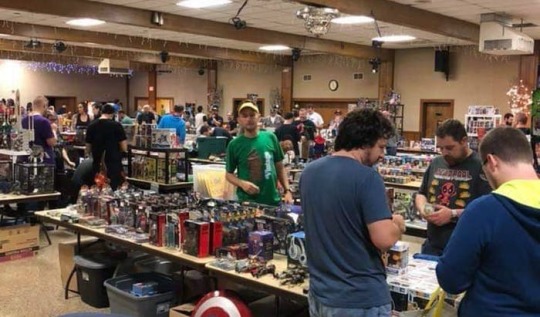
MN Toy Posse Image courtesy event organizers MN Toy Posse Halloween Bash 3 What happens when you combine 70 toy sellers from all over the Midwest, hundreds of toy fans of all ages, and thousands of rare and unique toys and collectables? You get one giant posse. This weekend, the Minnesota Toy Posse will host its third-annual Halloween Bash toy swap. Posse founder Mark Seekamp started the group a little over three years ago on Facebook as a way to help connect people looking to buy, sell, or trade their favorite toys. He hadn’t planned on just how many people would want to join his gang. “We have more than 2,200 members, and it’s a really active group,” he says. And it’s not just about toys, either. “We’ve become friends and talk about our lives. People will post pictures when they have a baby, or we’ll just use it to meet up and go see a movie. It’s about creating relationships beyond just looking for toys.” For Seekamp, the best part of the day is how toys can bring people together. “The coolest part is being able to see someone who is going to be really excited about a toy that you have that you’re ready to part with.” 9 a.m.-3 p.m. Oct. 20. Free. Knights Of Columbus Bloomington, 1114 W. 79th St., Bloomington; 952-888-1492. –Patrick StraitOpen Jam 8 p.m. every Sun. Free. Schooner Tavern, 2901 27th Ave. S., Minneapolis; 612-729-4365.Saint Paul Civic Symphony: Night and Day 1 p.m. Oct. 20. Free. Landmark Center, 75 W. 5th St., St. Paul; 651-292-3293. Read the full article
4 notes
·
View notes
Text
The Rare Bookseller Part 90: Vivian's Service
Previous > Masterlist > Next
tw: mind control, hypnotic induction, blood drinking
October 1925
"And here's your bedroom. I hope you like it."
"You have a bedroom for me, sir?" asked Vivian.
"Well, of course. I did say you belong to me, now. I wasn't necessarily expecting this to happen, so we can make it a more personal room later."
"It's nice," said Vivian, feeling a little overwhelmed. It was an ordinary bedroom with an ordinary bed, a soft-looking mattress and pillows, a wardrobe and dresser, a radiator in the corner. It was roomy and cozy and clean, the kind of room she used to dream about when she was an orphan girl scraping by. That was back when she would fantasize about someone swooping her up and saving her and taking her home. She'd forgotten those fantasies so long ago. "Thank you, sir."
She sat on the bed experimentally. It was far more comfortable than the one she had at her safe house, not wanting to spend money on frivolous things like a fancy mattress when she barely had time to sleep anyway. She got up and opened the wardrobe, which had many fine dresses, the sort of thing she would never wear, but also some simpler clothes.
"I'm sure those clothes aren't to your tastes, dear," said Miss Lily, watching from the door frame. "We'll do some catalog shopping and get you clothes more suited to you. Of course, I will want to see you in a fancy dress once in a while."
"I don't look good in them, sir." She was too tall, too awkwardly shaped, and the few times she'd tried to wear a dress had left her feeling like a cat stuffed into clothing against her will.
"That's nonsense. I'm sure you just haven't had clothes with proper tailoring. You're beautiful, darling, and when I dress you up, you will look stunning, guaranteed."
It wasn't something Vivian had ever cared about -- in fact, she had been somewhat disdainful of ladies who cared so much about dresses and finery -- but the reassurance still pleased her. She wanted to look beautiful for Miss Lily, perhaps. It was a way of serving her new madam.
Miss Lily yawned wide. "It's getting late in the evening. I'm tired, I worked hard today, and I'm still healing from a wound --"
"The wound I gave you, sir?"
"Yes, but you don't need to apologize. You didn't know your place yet." Miss Lily opened one of the dresser drawers and pulled out a fine silk nightgown with a broad neckline, and then a flimsy floral robe. "Here. You should wash up and change into these."
Vivian realized that she was still wearing her sweaty and grimy hunting clothes, stained in places with her new madam's blood. She took the offered clothes. "Yes, sir."
"Once you've finished up, you can attend to me. My bedroom is at the end of the hallway."
"Attend to…?"
"Nothing to be concerned about, darling. Your new duties as my loyal thrall." Miss Lily's smile was intoxicating. She was looking at Vivian as though she were already beautiful, even while dirty and disheveled.
"Yes, sir," said Vivian, bowing her head. She wanted to serve so much, as if it were the only thing she had truly been put on the earth to do.
"Good girl." Miss Lily ruffled her hair, her hand stroking down Vivian's cheek and tilting her chin up. "Take your time washing up. I'll be waiting."
Once Miss Lily had left, Vivian practically dashed into the washroom and closed the door behind her. There were two washbasins, one lower than the other. She found a cloth in a cupboard and filled up one of the basins -- Miss Lily had hot and cold running water in her home. She began stripping her clothing off and dumping it in a heap on the floor, idly wondering what had happened to her bags and weapons. A voice whispered in her mind that she didn't need those any more, and the thought fled from her.
Her skin was covered in scars, not only the deep scar from the rune she carved while hunting but dozens of others, big and small, from close shaves and from offering up her blood for other spells and rituals. And now, as she looked in the mirror above the basin, she found that she had two new scars, pinpricks on her neck, the mark of a vampire's hunger. She ran her hand over them, still somewhat fresh from Miss Lily's feeding the night before. This was who she was, now. She'd lost, and now she was nothing more than a glassy-eyed, entranced thrall, eager to serve her vampire.
She'd been so frightened of Miss Lily. So many thralls had been under her spell, had had their minds dampened and twisted towards service, praising how gentle she was and how wonderful it felt. Perhaps she had been so scared, had judged them so harshly, because she knew, deep down, she was no different. Perhaps she had always known that she'd end up here, that she'd fall so easily, that her destiny was to submit. The certainty ran deeper than Miss Lily's spell -- or perhaps her spell really did run bone-deep, changing her to her core.
She might never know, now. Few hunters had been willing to try and extinguish Miss Lily, even though a great deal of information was known about her. The hunters who'd tried had all ended up auctioned off, as far as they knew, pleasantly hypnotized former hunters to serve as prizes for rich vampires. No one would be coming to save her, and even if they did, no one could undo the hold she had on Vivian's mind, not entirely. That thought should frighten her more, but instead it felt comforting. There was no going back, no undoing what was done, no more struggle. She was Miss Lily's, body, mind, and soul.
Once she had finished washing, she slipped the nightgown over her head, smooth and cool. The woman in the mirror looked so little like her -- cleaned up, wearing some frilly thing, neck exposed with the pinprick scars showing, her eyes wide and unfocused, vulnerable. The thrall in the mirror was smiling. She could finally rest. Miss Lily had told her so.
Vivian felt as though she were sleepwalking down the hallway towards Miss Lily's room, caught in a strange dream. She opened the door to a very elaborate bedroom, featuring possibly the largest bed she had ever seen. Miss Lily looked small lounging in the middle of it, surrounded by at least a dozen pillows, wearing only a lacy white slip. Vivian didn't avert her eyes, feeling very certain that Miss Lily wanted her to see her like that.
"Oh, look at you. Aren't you a picture?" Miss Lily stretched and walked over to Vivian. Her soft pale fingers began to touch Vivian here and there, inspecting her as if she were some merchandise for the auction house. She turned Vivian's head, paying special attention to her neck, then placed both hands on the tops of her hips, turning Vivian around. Even through her mesmerized calm, Vivian was bracing herself for criticism or mockery.
"You look absolutely lovely, dear, more perfect than I could imagine," said Lily. "But your beautiful hair is all tangled. Allow me to wash it -- come, come."
"Thank you, sir," said Vivian softly, not knowing how to accept that reaction. She allowed the vampire to lead her into a bathroom attached to her bedroom. This bathroom looked as though a drugstore had exploded in it, with all sorts of cosmetics, soaps, combs, brushes, perfumes, towels, and hair accessories strewn about.
Miss Lily began filling a basin with water and pulled up a chair to it, beckoning Vivian to sit. With a practiced hand, she pulled out Vivian's half-undone braid, smoothing it out and gathering it up. "Here, lean back into the water. Shut your eyes, dear. You're going to be so good for me, and you're going to feel yourself drift."
Vivian hardly ever had time to wash her hair. It wasn't on her top list of priorities when she always wore it in a tight braid and ended up sweaty at the end of each night, anyway. She'd certainly not ever had someone else wash her hair, since perhaps her mother. She found herself feeling more vulnerable than ever leaning back into the water, closing her eyes and exposing her neck in front of her new vampire madam.
"Good girl," said Miss Lily. Warm water rushed over Vivian's scalp, and then there were fingers running through her hair, making her feel so relaxed and yet so oddly excited at the same time, as though she was drinking in all of the soft touch she could. It was so easy to lose herself in the sensation, especially with Miss Lily humming a bit of a tune and occasionally whispering to her. Soon, the air began to smell of floral soap, and those expert fingers were working away the accumulated grime of her hair.
"Ahhhh." Vivian couldn't remember being treated this well or feeling this good.
"You enjoy that, don't you?" said Miss Lily. "You need this. Doesn't it feel so right?"
"Yes, sir," she agreed easily, feeling as though she would do anything for Miss Lily as long as she kept rubbing at her scalp.
Unfortunately, it couldn't last forever, and soon enough Miss Lily was guiding Vivian up and out of the water. She wrapped one thick towel around Vivian's shoulders and another, smaller towel around her hair, gently squeezing it out.
"Now, hold still while I brush your hair out," said Miss Lily. "As I brush, you're going to feel yourself get so relaxed that you're going to fall even deeper into my hypnotic spell, even deeper into the bliss of obedience."
Vivian was utterly helpless to resist as Miss Lily began to brush her hair, the rhythmic motion and light touches lulling her further into a trance.
"That's it, dear. Let me drain your thoughts away and replace them with obedience." Brush. "Obedience." Brush. "Submission." Brush. "Such a good girl."
By the time Miss Lily finished up, Vivian felt as though she'd been turned into mush. Miss Lily picked up a hand mirror to show Vivian her handiwork.
If Vivian had hardly been recognizable before, now she looked like a different person utterly. Clean and shiny dark hair cascaded around her shoulders, brushing the top of her silk nightgown, and her smiling face reminded her of a porcelain doll's. No one would ever guess that she had been a hunter, now that she was a picture-perfect thrall. Her life as a hunter was seeming more and more like a fading dream.
"Beautiful, simply beautiful," said Miss Lily, sounding so satisfied, both with herself and with Vivian. "Now that we've attended to you, it's time for you to attend to me."
"Anything you want, sir."
"Yes, that's exactly the right attitude." Miss Lily sat down on a frilly vanity stool, handing Vivian the hairbrush. "I usually prefer to brush my hair while dry. Do help me out."
Vivian stood behind Miss Lily, picking up a lock of her hair to brush it out. She was so close, and it felt strangely intimate to brush her hair like this. Here she was in a vampire's home, brushing the hair of her vampire madam, submissive and quiet, her mind utterly enthralled. And she felt so at peace.
Miss Lily sighed deeply, and Vivian felt a new sensation overtaking her, something different than entranced calm. It was something forcefully dulling her mind and making her want to be still, very still and docile.
Through her foggy mind, Vivian realized that she recognized this. She'd felt this way before during very close calls, and again the other night. It was the vampiric feeding aura, designed to put humans into a stupor to make them easy to prey upon. Like every half-decent hunter, she'd trained herself against it, conditioned herself to resist automatically. She could feel that anxiety building now, the need to stay awake, to get away. Her thoughts were struggling to reassert themselves -- she was more than a meal. She was more than a food source. She had to fight this.
The brush slipped from Vivian's hand as she struggled internally. She shoved herself away from Lily, stumbling over her feet, a drowsy dizziness sweeping through her as she tried to escape.
"What's happening to me?" she said, staggering and leaning against the wall.
Miss Lily was pressed up against her. "Shhh, shhh, hush now, dear. It's okay. Quiet your mind now. Look me in the eyes and listen."
Vivian didn't hesitate to look deep into those eyes, her mind eager to shut off the struggle and return to serenity.
"You're safe, Vivian. You're safe here with me, remember? You're so sweet and obedient and such a good girl for me."
Vivian nodded slowly, her desire to fight slipping away from her like sand through her fingers.
"Just take my hand and follow me. You're doing so well."
Vivian allowed Miss Lily to lead her over to the bed, sitting on the edge and looking up at her madam. Miss Lily was looking deep into her eyes, stroking her face.
"I want your mind to go very quiet and still for me now, all right, Vivian dear?" she said with a smile. "Just for now. You can have all of your busy thoughts back later, but for now I want you to set them aside so that you can relax. Can you do that for me?"
"Yes, sir," Vivian mumbled, once again hopelessly caught in Miss Lily's spell.
"Take a deep breath in and out. In and out. With every deep breath, you're going to feel a little more of that resistance inside you ebbing away, flowing away. And your thoughts will slowly drain out, draining away, leaving you with such an empty mind."
She was drifting along, feeling better and emptier with every slow breath, her fear floating so far away again.
"And you're going to start to feel sleepy, dear, oh so very sleepy. Your mind knows how safe you are, doesn't it? Your mind knows that this is a safe place to be drowsy and docile. And any desire to resist will slip through that empty mind and turn itself into a desire to sleep," said Lily, drawing closer to Vivian. "You can just forget now. Just allow yourself to forget how to fight, forget why you ever wanted to fight."
Vivian looked at her vampire madam with half-lidded eyes, blinking slowly. There was still some small part of her that didn't want to lose herself, but she was so tired, and so comforted, and felt so safe. Miss Lily made it so easy to just forget.
Lily's smile turned wicked. "Now you're going to feel my desire to feed upon you. It's not going to frighten you at all -- you'll find it's very natural. You won't be able to resist at all. You're just going to feel such a deep urge to be still and docile and obedient, and you won't fight that urge. You'll simply give in."
She could feel it stealing over her again, the need to be so still and offer up her tender neck, and this time, when her mind reached for its resistance, it didn't come. Instead, she was filled with visions of fangs in her neck, craving her madam's bite. Her body slumped against Miss Lily, relaxing into it. "Please, sir, please drink from me," she said.
"You're doing so well. Good girl." Miss Lily touched Vivian's neck, her fingers brushing the place where she had pinprick scars. "I'm going to feed from you right here. You'll feel the touch of my fangs and the most lovely wave of pleasure will come over you. There will be no pain and no fear, only pleasure. Do you understand?"
"Yes, sir." Vivian's breath hitched as Miss Lily's cold lips pressed to her neck, like a kiss followed by the strange sensation of fangs sinking in -- and then bliss. She'd never felt like this before, her brain swimming in euphoria. Through the joyous haze, she could feel her madam's will -- how strong she was, how hard she worked, how much she needed to be in control to keep herself safe, to ensure that no one could hurt her again. And underneath it all, how lonely it was.
Vivian could understand that perfectly. Hunting was lonely too. She existed outside of normal human society, unable to relate to those who were unaware of the supernatural underworld. Other hunters were difficult to get along with, and it was a mistake to get too attached, only to watch them get slaughtered or captured. The thralls she rescued were damaged and broken.
But Miss Lily was different. She was strong, but she needed help. She needed protection. That's something Vivian could do to serve -- she could protect her.
"That's so sweet," said Miss Lily in response to the thoughts Vivian hadn't realized she'd vocalized. "That's such an excellent train of thought for an excellent thrall. Yes, you can protect me, my dear. You can protect and serve me, and be utterly loyal to me and me alone."
"Yes, sir," said Vivian eagerly, even through her drowsiness.
"You don't have to do that tonight, though. You should get some sleep."
Vivian was barely aware as she climbed into the bed, allowing Miss Lily to assist her and tuck her under the covers, only remembering that this was Miss Lily's bed when she was already halfway asleep.
"You've done well. I'm so pleased to have you as a thrall," said Miss Lily, radiating satisfaction. "Sleep now, and have nothing but the most pleasant dreams of serving your new madam."
Miss Lily climbed into the other side of the bed, snuggling close to Vivian. Through Vivian's sleepy haze, she remembered that she needed to protect her madam. Without hesitation, she wrapped her arms around the vampire, holding her close. It felt so right. Neither of them would be so lonely any more.
Previous > Masterlist > Next
Thank you for reading this self-indulgent chapter. Next week: Alexander tries and fails to give up.
@d-cs @latenightcupsofcoffee @thecyrulik @dismemberment-on-a-tuesday-night @wanderinggoblin
@whumpyourdamnpears @only-shadows-dwell-where-we-are @pressedpenn @pigeonwhumps @amusedmuralist
@vampiresprite @irregular-book @whumpsoda @und3ad-mutt
@sowhumpshaped @whumpsday @morning-star-whump @silly-scroimblo-skrunkl
@steh-lar-uh-nuhs @light-me-on-pyre @theauthorintraining @whump-me-all-night-long @anonfromcanada
@typewrittenfangs @tessellated-sunl1ght @cleverinsidejoke @abirbable @ichorousambrosia
@a-formless-entity @gobbo-king @writinggremlin @the-agency-archives @just-a-whumping-racoon-with-wifi
@enigmawriteswhump @bottlecapreader @whump-on-a-string @whumpinthepot
@cinnamoncandycanes @avvail-whumps @tauntedoctopuses @secret-vampkissers-soiree @whatamidoingherehelpme
@strawbearydreams @ghost-whump @tippytappytyping @natthebatt @fire-bugg14
#whump#whump writing#vampires#mind control#hypnosis#vampire whump#vampire hunter#rare bookseller#vivian#lily
78 notes
·
View notes
Photo
You can find places to watch The Booksellers online here as provided by the documentary’s official website. Locations include the US, the UK and Ireland, Canada, Australia, New Zealand, Sweden, Israel, Poland, Spain, Germany, and Finland. Some options are free and some require payment or subscriptions. I believe that using a VPN to change your location would give you a variety of viewing options.
Here’s a brief description of the documentary taken from Rotten Tomatoes: “A behind-the-scenes look at the New York rare book world and the fascinating people who inhabit it.” It’s got a 90% approval rating by critics and a 71% approval rating by the audience as of May 5, 2021. According to audience reviews, it’s a bit disconnected and sometimes drags a bit, but is overall a good watch, especially if you’re really interested in the subject!
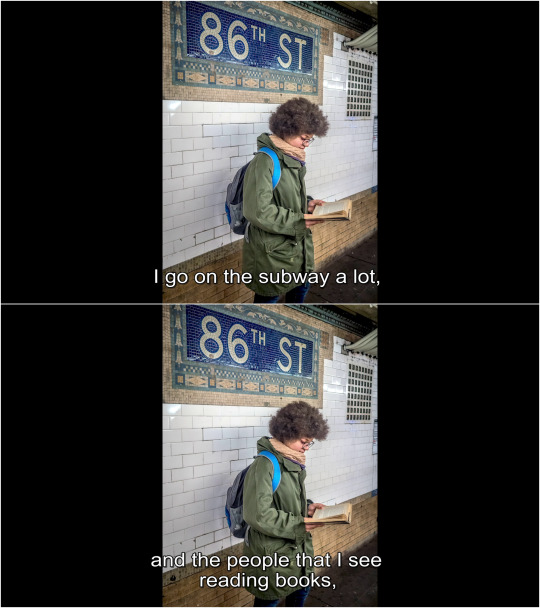


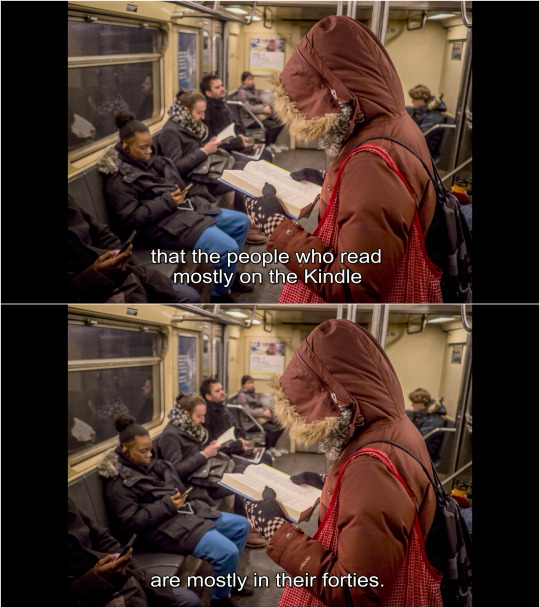
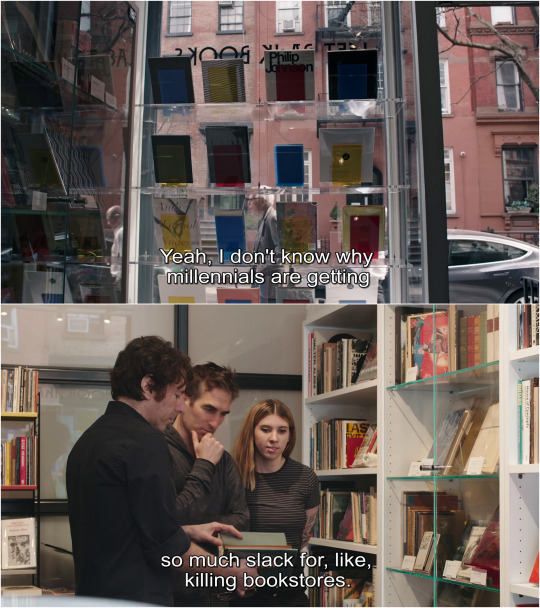




The Booksellers (D.W. Young, 2019)
103K notes
·
View notes
Text
I’ve gotten a few messages from people who wanted to stay anonymous, about some of the kidlit posts I’ve been making of late, and I wanted to clarify something.
Queer representation in children’s lit has not been omnipresent. As recently as the 1990s, especially, it was difficult to find, and a lot of the books that did have queer representation were sidelined as Gay Books. We didn’t have Amazon; your best bet for books were what your local bookstore or library carried, and even when queer-friendly books for kids were published, they weren’t always carried, especially in more conservative areas.
I don’t want to give the impression that it was easy to find books with characters who weren’t straight.
What my posts were trying to say, and what I will continue to harp on, is that even in the 90s, while the presence of queer characters was rare, it was not impossible. In addition to books that were seen as specifically for gay audiences, like I’ll Get There It Better Be Worth the Trip and Annie on My Mind, there were books like Weetzie Bat, which had a much broader audience.
The late 90s-early 2000s had a cultural shift. On TV, Jack came out as gay on Dawson’s Creek in 1999 and Willow came out on Buffy in 2000. In young adult lit, an anthology, Am I Blue?, came out in 1999, featuring gay stories from a variety of authors. (I didn’t know at that time when I first read it how many of the authors featured were gay themselves, but looking back it’s certainly worth noting.) Rainbow Boys, Boy Meets Boy, and Geography Club were all YA novels with gay and questioning protagonists that did well both critically and commercially between 2001 and 2003. Jacqueline Woodson’s novels existed. Gregory Maguire wrote stories. In many places it was hard to find books with representation, but if you knew where to look, it was present. It was there.
The reason I keep harping on the fact that these books exist is that so many of the comments defending JKR’s decision to not have Dumbledore be gay is that, in that publishing climate, it wasn’t possible. And that is an excuse. It’s a historically inaccurate and intellectually dishonest excuse. That queer characters weren’t everywhere doesn’t mean they weren’t anywhere, and the time between the publication of Philosopher’s Stone and Deathly Hallows was a sea change in what was out there.
For the record, I absolutely agree that Philosopher’s Stone did not need to mention Harry’s teacher’s sexuality. Harry wasn’t observant enough, for one thing; it was a middle grade novel very focused on Harry’s inner world rather than the world around him, for another; JKR was a debut author with a lot to lose, for a third. By Deathly Hallows, none of that is true. Harry Potter had grown into a massive young adult series, largely known for how giant and detailed the magical world was. Every book in the Harry Potter series was outselling expectations, and the movies were blockbusters. JKR was a millionaire. She had more power, and less to lose, than basically any other author. Even if places had tried to keep the seventh book of the Harry Potter series away from readers because of a single sentence mentioning that Dumbledore’s relationship with Grindelwald- a major plot point of the story!- was not platonic, they wouldn’t have been able to.
Maybe that could have opened the door for even more readers to check out all the books that had been published about gay characters, but hadn’t crossed their radars. Maybe that would have had enough impact that in 2018, people wouldn’t be insisting that in 2007 queer representation wasn’t something that happened, even though plenty of evidence exists that it did happen, whether or not they read it at the time.
And the thing is, it’s 2018. Queer children’s and young adult lit is doing amazing right now. There is absolutely a need for more- there will always be a need for more- but thanks to incredibly hard work at basically every part of the publishing chain, from writers and artists to agents and editors and marketing to librarians and teachers and booksellers, it has exploded. I cannot tell you how happy I am that I can’t even begin to read all the queer kidlit out there, because there is so much.
But imagine, for a second, if it had been in Harry Potter. Imagine if the biggest children’s literature series in a century had featured a gay character. Imagine if, instead of having a few instances of queer coding and then mentioning one character’s sexuality in an interview, JKR had included a single sentence unequivocally telling the reader gay people were part of her world. That would have not just shown gay kids that they were indisputably part of Hogwarts, which would be enough in and of itself! It also would have shown publishers queerness won’t stop readers from devouring the text. And it would have shown a whole generation of writers who maybe didn’t have access to the books someone with privilege (like me, or like JKR) could read, that they could include queer characters in their work and still be published.
If that had happened in 2007, imagine where we’d be in 2018.
262 notes
·
View notes
Text
Around the World with Vintage - Tanaka Kiyomi (Akanesasantique)
The best thing about being a vintage girl in the modern world is having the internet and finding other kindred souls from other parts of the world. This month on the Around the World with Vintage series we visit the coastal Yokohama in the beautiful Japan.When I came across Kiyomi whose wardrobe constantly turns me green with envy I just had to learn more about her. The way she puts together her outfits is artistic and detailed and now that I know what she does for living it totally makes sense. She graces my Instagram feed regularly with her posts at Akanesasantique and we chatted about the vintage trends in Japan and how the World War II affected the fashion movement there.

Tell us about yourself
I’m a 38 year old vintage enthusiast, pianist, lover of art. I was born in Tokyo and spent my childhood, in the late 80s, in Los Angeles. I studied classical piano at a collage in Tokyo, and a conservatoire in France. I lived near Versailles for 5 years. During that period, I encountered early 1960s fashion that inspired me to start wearing vintage clothing. I used to frequent booksellers along the Seine river, and bought a lot of old magazines such as ELLE and Modes et Travaux.
Do you live in Yokohama? As a seaport town people are probably dressed more casually do you think there’s a big different between Yokohama fashion to Tokyo or Osaka/Kyoto?
No. I don’t think that people in Yokohama dress more casually than people in other towns. Yokohama has always been an elegant town rather than casual. There was a fashion movement called HAMA TORA(=YokoHAMA TRADditional style) which encouraged classic and elegant dressing. It originated in a university in Yokohama in the late 1970s but this specific style lost popularity in the 90s when the university moved location. In addition, as fast fashion become popular, Yokohama loses is individuality like other cities. Unfortunately, I’m not very familiar with Osaka/Kyoto fashion though I have heard that Osaka fashion is bolder than Tokyo.
Japan is a very fashionable country and vintage has gained popularity but mostly people combine vintage with modern pieces or go for a specific style like rockabilly rather than wearing vintage authentically. You have however chosen to stick to a more authentic style. Why have you chosen to do so and how do people react to your looks?

My closet mainly consists of clothing between 1930s and 1940s.The 1930s is important era in cultural history of 20th century. Replacing culture of 19th which had been ruled by aristocrats and landlords, new cultural trend had arrived. Through this era, the base of contemporary fashion style and dress code had been matured. I really did not want to be a COSTUME player who turns away from the modernity of after WW1. At the same time, recklessness of today’s fashion, which is not constrained by any dress code, brings discomfort to me. Meanwhile, there are many kinds of clothing in my closet. The dress used to be owned by a duchess, casual homemade dresses in war time era, and an old stock dress of mail order catalog company, .etc. I love everything of these dresses, the fabric, the sense of colors and the delicate sewing details are amazing. I enjoy mixing and matching them but I’m not concerned with those original value. So, my way of wearing vintage is absolutely free and based on modern spirits not obeying customs in past. I feel like that is a real pleasure of dressing vintage in our modern time.
My vintage looks often attract attention of others, especially on historical tourist spot like a classic hotel. Sometimes I get compliments from fashionable elderly persons and kids.
What do you think about vintage shopping in Japan? I mostly see 1960s and 1970s Japanese vintage clothing but never found any older pieces. Why are they so rare?
There are many vintage shops in Japan. However, I don’t often go to local vintage shop in recent years so I don’t know a lot of them. All I can say for sure, most of vintage items in those shops are clean, easy to wear for vintage beginners. Though they seem more pricey than other countries.
It’s actually impossible to come across the true Japanese vintage as most was destroyed in the WW2. The life of Japanese people was hard for several years after war. For these reasons Japanese vintage before ready-made clothes became popular (before 1960s) very rarely exist in fact.
Are vintage clothes are popular in Japan? Is there any particular style that is more popular than others? I often see rockabilly vintage girls but not as many from earlier decades like you?
No. not really popular. Certainly we see many second-hand clothing stores for re-use, but they are not so fashionable. There are also no one specific popular styles among vintage lovers in Japan. Why not earlier decades? In my personal opinion, modern people tend to prefer loosely clothes with stretch material rather than tightly fit. The vintage clothing before 1950s is cut closer to body. I guess it would be hard to accept its characteristic silhouette.

How do you feel about mixing vintage with modern clothes? I have seen numerous times Japanese women wearing vintage bed jackets as summer cardigans with jeans but rarely see head-to-toe vintage pieces.
That actually seems difficult for me. I feel that mixing vintage and contemporary clothes is more difficult than mixing different eras of vintage together. Modern mass-produced clothing doesn’t easily match with vintage. There is a great difference in fabric, pattern and sewing method between them. In contrast, I wear sometimes tailor-made clothes, they are also modern clothes and not are vintage reproductions, though they go well with vintage.
What do you think are the most sought after vintage pieces in Japan?
That’s hard to say. Because vintage lovers in Japan have respective originalities and strong tastes. Some like rockabilly vintage, some wear American or European vintage with antique kimono, and others mix 1970s vintage and modern jeans, etc. The list is endless. Their needs are too various, more complex than general people. So, I can’t think of any right answer.
Is there a lot of WWII memorabilia still around in Japan? What about WWII-related clothing such as uniform? What is the general sentiment regarding these pieces?
Nowaday we can’t really see WW2 memorabilia. Japan is a defeated country. Most of Japanese are conscious of a feeling of negative heritage about WW2. However, the prewar memorabilia remain even now. For example “Sailor fuku” (=sailor style uniform) for high school girl and graduation gown for female university student, consisting kimono and overskirt called “Hakama” were born in this era, they are still generally worn today . The pre-war Japan was very rich in culture.

We don’t see a lot of Asian vintage girls around, why do you think that is and do you have any advice for any other Asian girls who want to start wearing vintage?
In Asia, there used to be no role models of western fashion because of the undeveloped mass consumer culture. As an exceptional case, in Japan, western fashion lifestyle has become accepted ever since the prewar era . Nonetheless, for many Asian people, vintage clothing is still new culture.
If I was to give some advices for Asian girls who want to start wearing vintage: find a good quality shop and with knowledgeable owner. For beginners, it is not easy to buy vintage online, better to getting advice from experts . I myself havelearned many things from them.
If there is one thing that you want people to know about you, what will that be?
Since I started Instagram and etsy shop in 2016, I’ve met many vintage lovers all over the world. I’ m very content with my vintage fashion life. Furthermore, I’m thinking that I would like to embody the composite art that combines the fashion and music of olden times. Because the base of my aesthetic always presents in the music, though I am attracted to a lot of fields.

#around the world with vintage#atwwv#tanaka kiyomi#akanesasantique#interview#vintage girl#japan#japanese#yokohama#vintage
8 notes
·
View notes
Text
The Booksellers
In my student days, I worked for a year at a used bookstore on a small street in Madrid where all the shops, bar a design agency and a café, were rare booksellers. All the booksellers were friendly with one another, and would come in often into the shop trying to sniff out some interesting rarity who’s value we might not have been able to spot.
So you can imagine my excitement when DW Young’s documentary about this rare, fascinating breed of treasure hunter landed in my inbox. The Booksellers doesn’t focus so much on the different personalities and quirks of the collectors as it does on trying to find what makes rare booksellers tick, and unearthing the politics that make up the very particular New York book scene.
The film is narrated and executive produced by Parker Posey (the star of iconic librarian movie Party Girl), who became involved with the project as she was a regular at one of the bookstores.
We meet Dave Bergman, who can barely move in his apartment, crammed as it is with antique books from floor to ceiling; then there’s sisters Adina Cohen, Naomi Hample and Judith Lowry, who took over the family business of Argosy Book Store (and who totally demand a bookshop-set TV series to be based on them); and Rebecca Romney, who habitually nerds out about books on Pawn Stars and runs her own rare books firm.
While it paints a picture of the book scene in New York (including witty contributions by legendary commentators like Fran Lebowitz and Gay Talese), the most intriguing thing about the film is how it centres what makes a collector. With the hunt for a rare edition is transforming because of the online market and new voices coming onto the scene, with some people losing interest as the internet takes away the romantic, scavenger-like aspects of it.
The film does a lot to underline the ingrained sexism in this specialist world of rarities, first editions and specialist knowledge. Female and Black booksellers talk about the lack not of representation in the profession, but of the importance of their work as a form of conservation.
The inherent biases that exist with that space are brought to the forefront, with stories of women book dealers not being taken seriously, or not being credited for their work. The biases can manifest itself mostly in the content that’s being collected, because the act of collecting something is giving those items and those perspectives value. As Young puts it, “Rare book dealers and collectors play a fundamental role in preserving history.”
Like Syreeta Gates, who began collecting ’90s hip hop magazines while trying to find an article that hadn’t been digitised anywhere. That magazine became a collection, and she in turn became an archivist of hip hop culture. Or Heather O’Donell, owner of Honey & Wax Booksellers and founder of the Honey & Wax Book Collecting Prize, which encourages young women to “pay attention to the books that fascinate them, even if they’re not yet sure why.”
“The hunt” may be the driving force of the booksellers, but the film shows rare bookselling evolving into a form of curatorship – and that being the key of its evolution, survival and accessibility. Anyone who is interested in a particular subject area can become a collector. The most interesting collectors, the film posits, are people who see something others don’t.
The post The Booksellers appeared first on Little White Lies.
source https://lwlies.com/reviews/the-booksellers/
0 notes
Text
Q. David Bowers on Bill Bierly’s In God We Trust
(Pelham, Alabama) — In November 2019 Whitman Publishing will release William Bierly’s In God We Trust: The American Civil War, Money, Banking, and Religion. The 352-page hardcover volume will be available from booksellers and hobby shops nationwide, and online. Here, numismatic historian Q. David Bowers shares his thoughts on the book.
Bill Bierly’s In God We Trust is one of the most detailed, intricate, and fascinating books in the field of American numismatics—and in American history in general.
The national motto “In God We Trust” is familiar to all of us. Look in your pocket change or wallet and you will find it on every United States coin and paper bill. Before reading the manuscript to Bierly’s book I thought I knew all about the subject.
1864 two-cent piece, PF-65. Hover to zoom.
Some years ago I wrote an article, “God in Your Pocket,” for my local Presbyterian Church, telling of the motto’s use on coins. I knew it appeared on pattern coins in 1863 and in 1864 made its first appearance on a circulating coin, the bronze two-cent piece, a new denomination introduced that year. I had the obscure knowledge that “In God We Trust” is the motto of the State of Florida and was used on certain National Bank notes issued in that state in the second half of the 19th century.
I also knew that the $5 Silver Certificates of the Series of 1886 illustrate the reverse of a Morgan silver dollar of that year, with the motto as part of the design.
But what I didn’t know were 101 other details—make that many more than 101 different details—as to how the motto came to be, how it was used over the years, and the wide cast of characters in the Treasury Department and elsewhere who participated in its use on money.
All too often, books, newspaper columns, and magazine articles about popular subjects lack many details. For Whitman Publishing I wrote a volume on President Ronald Reagan, and I read every book and important study I could find. There were very few details about his personal day-to-day life. Not to worry about the historical personalities involved with “In God We Trust.” While you might not learn the names of the protagonists’ pet cats or their favorite dime novels, there is not much else missing in Bierly’s excellent narrative. Dozens of cast members play cameo roles and small walk-on parts.
It is probably correct to say that no other researcher could add to Bill Bierly’s efforts! He collaborated with professional numismatists, leaving no stone (or coin) unturned in the creation of this book. Commonly believed myths and misunderstandings he examined, debunked, and corrected. Hundreds of historical images were collected, many of which have never been published in a numismatic reference, to which have been added beautiful photographs of rare coins, patterns, tokens, medals, and paper currency, including close-ups of important characteristics. All of this required a lot of work, creativity, and careful attention to detail.
Further on the subject of detail: I enjoy learning about and digging deeply into previously unexplored subjects. I have written books on the Waterford Water Cure (a health spa in Waterford, Maine, that counterstamped coins as advertisements), The Strange Career of Dr. G.G. Wilkins (about a countertstamper who was a dentist, also operated a restaurant with a caged bear in front, and was suspected of passing counterfeit money and also burning down a neighbor’s barn), and, for good measure, books about Alexandre Vattemare (a French numismatist who visited America and became important to the development of libraries here), and Augustus G. Heaton (the teenaged coin dealer who founded the American Numismatic Society in 1858).
Each of these books was popular in its time, despite their obviously obscure subjects. Readers find satisfaction in a well-told story that brings new depth and insight.
That is precisely what we get with In God We Trust, debuting this holiday season. Anyone with a combined interest in American history and numismatics will find a new world of important information, fascinating details, and previously unconnected relationships.
2009 Abraham Lincoln commemorative silver dollar Uncirculated obverse.
The motto “In God We Trust” is hardly history alone. It is so much more, and it means different things to different people. Today there are vocal critics who feel that it has no place on coins or paper currency. For that matter, some believe that God has no place in public (and in some cases, private) life. On the other hand, many more people do indeed believe in the Supreme Being. Sometimes it just seems the naysayers get all of the publicity.
“In God We Trust” has appeared on American money since the Civil War. William Bierly tells how the national motto came to be. (Photographs courtesy of Stack’s Bowers Galleries and the United States Mint.)
Bill Bierly’s In God We Trust approaches the subject respectfully on all sides, with color, personality, dashes of humor, and dogged pursuit of the truth. He has given us a smorgasbord: There is a lot to choose from. If you are a collector and strictly so, with no interest in the million points where numismatics touches American history, you can simply immerse yourself in the coins, paper money, tokens, and medals. If you are like me, however, and enjoy every historical highway and byway connected to American money, you will read and find pleasure in the entire book from start to finish.
David Bowers is the award-winning author of more than 60 numismatic books ranging from 90-page monographs to 900-page encyclopedias, hundreds of auction and other catalogs, and several thousand articles including columns in Coin World, Paper Money, and The Numismatist. He is a past president of both the American Numismatic Association (1983–1985) and the Professional Numismatists Guild (1977–1979). In his 60-plus-year career in numismatics, he has earned most of the highest honors bestowed by the hobby community, including the ANA’s Lifetime Achievement Award and induction in the ANA Numismatic Hall of Fame.
In God We Trust: The American Civil War, Money, Banking, and Religion
By William Bierly; foreword by Q. David Bowers
ISBN 0794845282
Hardcover, 6 x 9 inches, 352 pages, full color
Retail $29.95 U.S.
About the Author
William (Bill) Bierly was raised on a farm near Walkerton, Indiana. As a child, he heard stories from his grandparents about two of his great-grandfathers who had served in the Civil War. This led to a lifelong interest in that war and that period of history. At about age eight, he began collecting coins from circulating change. Following high school Bierly attended Northwestern University for two years and then completed a degree in sociology and economic development with a minor in Chinese studies at Indiana University. He then worked in India for two years as a Peace Corps volunteer in a dairy development project. Back in the United States, his interest in coins was rekindled. He soon went abroad again, working for three years in Osaka, Japan. Then in the United States, he operated a small business for five years, sold it, and entered graduate school, earning an MBA in finance from Indiana University and embarking on a 25-year career in commercial banking. With his overseas experience, Bierly focused on international banking, particularly Japanese corporate business and Asian correspondent banking. He began his career at the National Bank of Detroit, and he worked with J.P. Morgan Chase for much of his career; at various times at the bank’s Detroit, Chicago, and Columbus, Ohio, offices, as well as often traveling to Asia.
While thus engaged, Bierly continued to pursue his coin hobby, eventually specializing in Civil War–era coinage, in particular, pattern coins. Today he is active in several coin groups and clubs, most notably the Central States Numismatic Society, the American Numismatic Association, the American Numismatic Society, the Chicago Coin Club, the Michigan State Numismatic Society, and the Pennsylvania Association of Numismatists, as well as the Civil War Token Society and the Liberty Seated Collectors Club. He sometimes exhibits his collection at major coin shows and frequently volunteers as an exhibit judge.
Bierly resides in LaPorte, Indiana. He has two children, Emma and Ken, as well as a granddaughter, Kiki.
About Whitman Publishing
Whitman Publishing is the world’s leading producer of numismatic reference books, supplies, and products to display and store coins and paper money. The company’s high-quality books educate readers in the rich, colorful history of American and world coinage and currency, and teach how to build great collections. Archival-quality Whitman folders, albums, cases, and other holders keep collectibles safe and allow them to be shown off to friends and family.
Whitman Publishing is the Official Supplier of the American Numismatic Association. As a benefit of membership in the ANA, members can borrow In God We Trust (and other Whitman books) for free from the Association’s Dwight N. Manley Numismatic Library, and also receive 10% off all Whitman purchases. Details are at the website of the ANA.
❑
Follow us on Facebook and Twitter!








Comments
American Liberty Gold (400.00 over spot) 50,000 mintage & just ... by Jim
@So Krates- It appears to be just your browser, or just some ... by Einbahnstrasse
Yes, the premiums have gotten ridiculously high. by Brad
@Jerome Diekmann says,” I know silver prices were higher in ... by cagcrisp
Space….the final frontier. by Throckmorton
Plus 5 more...
0 notes
Text
Agilenano - News: #weeknightbakingbook’s birthday month
Announcing Weeknight Baking’s Birthday MonthMy first cookbook, Weeknight Baking, comes out exactly one month from now. There are 80+ recipes, 90% of which are brand-new (with the remaining 5% updates of beloved recipes from this space), with each recipe getting its own full-color image (shot by yours truly, to boot). It would mean the world to me if you pre-ordered a copy on Amazon, Barnes & Noble, Target, or the indie bookseller of your choice (may I show my Portland pride by suggesting Powell’s?). If you do so, keep your receipts! Because to gear up for my book’s birthday, I’m going to be spending the month celebrating with a bunch of behind-the-scenes posts, recipe sneak peeks, and giveaways on Instagram, with exclusive ones for everybody who was wonderful enough to pre-order. And I know I’ve spent a lot of time talking about the making of the book, but hardly any time at all (save for an announcement post from several years ago) about what the book is actually about. Oops. So let’s go back to the beginning. What is Weeknight Baking?Throughout the years, many of you have asked me if there was a Hummingbird High cookbook in the works. I most likely smiled placidly (or impatiently, depending on my mood) and said something like, “I wish, but I really don’t have the time for that!” Because unlike most of my peers, I had a secret—I wasn’t actually a full-time baker and blogger. In fact, for many years, I ran Hummingbird High while maintaining a very traditional nine-to-five, 40-hours-a-week desk job: first in finance, as an analyst, and then in tech as a systems engineer. During that time, I was lucky and fortunate to achieve many successes that many folks dream of: I received two Saveur Magazine nominations that named Hummingbird High as one of the best baking and desserts blogs on the internet, I was invited to many trips across the country (and even across the world!) to attend food festivals and learn about brands and farms, I started earning enough income for the blog to qualify as a legitimate “side-hustle”, and so on. But working a traditional, full-time job in addition to blogging about baking at professional level meant that I didn’t actually have a whole lot of time to bake. Sure, I could bake on the weekends, but I liked to save that precious (and already very limited!) time for my friends and family. So that left me with weeknights. You know that weird and awkward amount of downtime you have, after you get home from work, you’ve made dinner, cleaned up, and completed all your chores? Most people spend that time vegging out in front of Netflix with a glass of wine, curling up with a good book or a host of Internet articles, or, hey, even sensibly going to bed early to get a good night’s sleep. But not me—there I was, still in the kitchen, trying to figure out how to bake layer cakes and pies and cinnamon buns in that short amount of time. Why I wrote Weeknight Baking The funny thing is, on Hummingbird High, with the exception of a cheery baker’s note now and again, I never candidly talked about what it was like to bake while balancing my job. As you guys know, my recipes were presented with beautiful pictures and meaningless chatter about my current mood or weekend plans. I rarely mentioned my struggles and time constraints; iIn fact, my previous blog agent of mine even encouraged me to hide those stories! Ridiculous, I know, but she was just encouraging me to present only the best parts of myself, especially since blogs are where everything is perfect and has all the time in the world to spend as they wish. But I know that’s not true—and that’s why I wrote Weeknight Baking. We’re all doing the best we can with what we have. So, what does that mean? It means that the recipes in the book are written in a way to fit everybody’s time-strapped schedules. Most recipes use ingredients that are already in your pantry and will have active times—that is, the time it takes to prep ingredients and actively go through the recipe steps themselves—of 30 minutes or less! For more time-consuming recipes like layer cakes and pies, recipes instruct you to make them over the course of a few nights so that you won’t be stuck in the kitchen for hours at a time (all without compromising flavor or quality, of course). Because that’s the secret behind Hummingbird High, and how I was able to make this cake and this pie and this tart all while balancing everything. And you can too. Get excited! Pre-order Weeknight Baking Pre-order Weeknight Baking here: Amazon Barnes & Noble Indiebound Powell’s Target #WeeknightBakingBook

Agilenano - News from Agilenano from shopsnetwork (4 sites) https://agilenano.com/blogs/news/weeknightbakingbook-s-birthday-month
0 notes
Text
An Act of Shelf Discovery

[This post brought to you spoiler free and full of the blogger’s personal experience!]
In my third-ever post on this blog on March 23, 2017, I wrote about making the switch from physical books to e-books. For someone who loved (and still loves) the sensory aspect of physical books, it was a daunting challenge, but a necessary one: At the time, I would go on average 6 months between moves, had three shelves at my consistent disposal, and more books than I could count. Books lived in piles next to my bed, were stored in boxes in the closet, were forced upon my brother (who is also an avid supporter of this blog and probably reading this post: In which case, hi!) under the guise of “recommendations” so they could live in his space instead of mine.
Fast forward two years and that habit has set in hard - I purchase between 85 and 90 percent of my books digitally now, even though some of the circumstances that made it necessary have thankfully expired (For the record, infrequent moving is an absolute joy!). In addition to a more compact, generally cheaper library that I abuse less and finish more, e-books have also contributed strongly to another new book-buying habit I’ve developed: Preordering.
In 2019, I made it a goal to learn more about my own literary consumption by forgoing the majority of traditional book shopping and preordering any new release that piqued my interest. Tracking each of my pre-purchases via color-coded spreadsheet (as one does, and indeed, must), I’ve thrown myself full-force into the new, and learned a lot in the process, both about the function of preorders in the publishing industry and about my own taste in literature.
The Purpose of Preorders
Before this experiment, my main experience with pre-orders had been primarily in relation to video games (I’m a sucker for midnight release downloads directly to my console) or limited edition media that I’m unlikely to procure without being proactive. I didn’t really know much about them beyond the consumer perspective, but being the chronic researcher I (clearly) am, I wanted to know what my new purchasing habit meant in greater context.
To break it down, preorders serve two main purposes in the publishing industry. They are A) a promotional tool for authors and publishers to build hype for a book before it’s released and B) an indicator for stores to properly respond to a book’s demand.
A preorder’s promotional value could come from a few different avenues. As pre-order sales contribute to the release week sales total for a book (as mentioned in this Parnassus Musings post), they can be valuable fuel for books that rocket to the top of bestseller lists. For first time or less well-known authors, having a preorder page automatically create an additional searchable content and feeling of legitimacy for books in the promotional phase. The more people who pre-order the book are also potentially more people who would share about their pre-order with their friends.
For established authors, preorders often come from existing fans of a series or the author themselves, and serve as an indicator as to the activity of the existing fanbase, efficiency of an author’s platform for communicating with fans, as well as their interest in new work.
In 2016, the written script of “Harry Potter and the Cursed Child” became Amazon’s No. 1 preorder for the year, according to CNET, and topped Barnes & Noble’s chart as well, according to Rolling Stone. While the exact number of preorders was apparently not released, it makes complete sense that the number would be a big one. Pottermore (which Wikipedia describes as a “digital publishing, e-commerce, entertainment, and news company from J. K. Rowling” not limited to the popular virtual Hogwarts experience) released a bulletin early last year that over 500 million Harry Potter books had been sold in the 20 years since the first book’s release.
In addition to their promotional function, preorders also serve as an indicator for a book’s popularity upon release. In a 2017 blog post to authors about the importance of pre-orders, Penguin Random House stresses that a high enough preorder number could “lead to retailers increasing their initial orders.” Last November, Barnes & Noble reported former first lady Michelle Obama’s memoir “Becoming” to be the most preordered book of 2018, according to The Washington Post. This article in particular points out how booksellers prepare for a book’s popularity based on a preorder buzz, “bracing” for enormous numbers of books to fly off the shelves by bulking up their orders ahead of time.
Preorders are a function of marketing in the publishing industry - an opportunity to get readers in the door early, and get them to talk about a book before its release. In return, readers get discounts, bonuses, the satisfaction of knowing they’ll be one of the first members of the public to receive the work, and, very occasionally, some insight into who they are as readers.
Getting Shelf-ish
In the four-ish months (at time of writing), around 22 books have come to me through the preorder method. With 13 books total read so far this year, about 7 of them were preorders, both they and the books between them have plenty to tell about how I read.
My taste is more consistent in concept than it is in practice.
Anyone who’s stuck around String Narratives long enough will know that, across mediums, I’m big on a few genres: Science fiction, horror and satire, primarily. When I started preordering books as a part of this experiment, I thought it pretty safe to assume that if a book fell into one of those categories, there was a good chance I’d enjoy it. Which, for the record, probably still holds true.
But one thing that I did notice early on in this experiment and didn’t expect at all was that I very, very quickly get bored with my own taste. I can get ahold of too much science fiction at once, too much horror. Both genres can get absolutely exhausting without a break between them - breaks I took naturally when purchasing books in a more traditional fashion without realizing. So, for all of those winter sci-fi reads I was so excited about started losing their appeal, I found myself turning to much different fare as a palate cleanser: YA fiction, books about food, and biography - three genres much lower on my radar which I ended up enjoying just as much.
Access to books is rarely the thing that keeps me from reading.
It is what it says on the tin. Where I’d previously easily blamed “not having anything to read” (a concept laughable to anyone who knows me, much less has lived with me and my books) for a lack of desire to consume printed work, I have to now own up to my truth. As books are on a similar mid-week release schedule as most other popular media, I get at least one book delivered to my e-reader most Tuesdays, which means there is always something to read. If I don’t want to read, it’s simply because I don’t feel like it. (Which is totally okay! Life happens and we roll with it.)
My library is built from recommendations.
Recommendations and reviews are my bread and butter when it comes to choosing what kind of media I want to ingest, and not always in the way you think. I typically rely on others to help discern the true atmosphere of a work when I’m easily caught up in cover art and promotional images. While books in the promotional stage are less likely to have a significant number of reviews, I still rely fairly heavily on Advance Reader Copy (ARC) reviews to estimate how much I’ll enjoy a book before preordering. Adding onto that, I get a lot of my book news from online outlets specifically dedicated to new book releases, including Verge’s monthly round-up of science fiction books and Book Riot’s whole entire site.
My new release discovery time is anywhere between 1 month and 10 months.
Was I absolutely stoked to find out that my book of the year 2018 - Semiosis by Sue Burke - was getting a sequel? I absolutely was. Did I preorder that sequel nine months and 11 days before it’s projected to come out? I absolutely did. For authors I already know, love and follow, I’m happy to be that fan that lets everyone know I’ve already made the preorder. For authors I’m less familiar with, or who are debuting their first book, that ten month window might actually shrink to something more like ten days. It isn’t a hard and fast rule, but there certainly is something to being in the know when it comes to favorite authors’ upcoming releases - a result of great communication and even better marketing.
The narratives we consume say a lot about us. They speak to our loves, our fears, the places we want to go between the hours of our waking lives. We pass them along to those around us, intentionally or not.
But as we become consistently more aware of how the stories around us shape our lives and mature in our understanding of how they fit into the world, we must also, I believe, recognize something else: The way we acquire narratives says just as much about us as the stories we choose to slip into.
0 notes